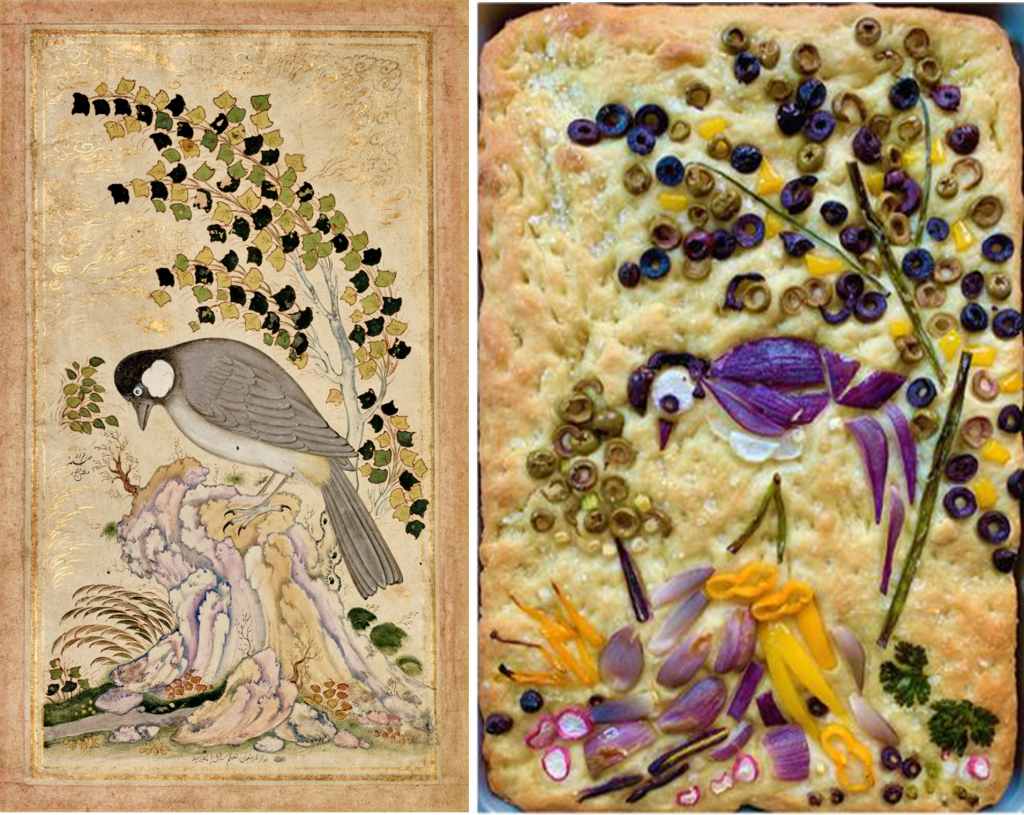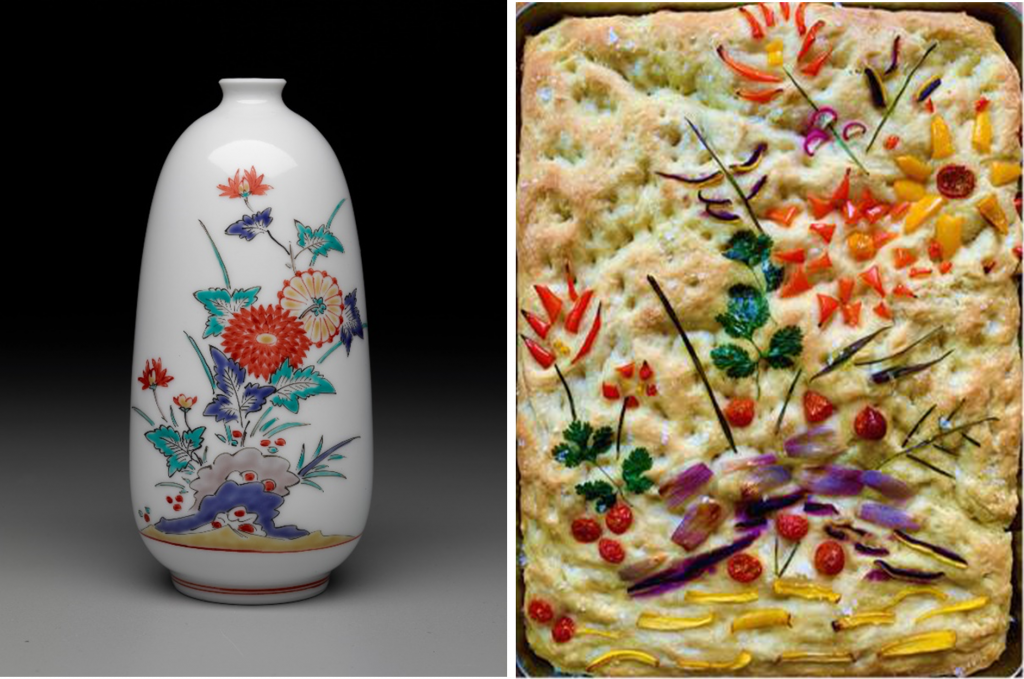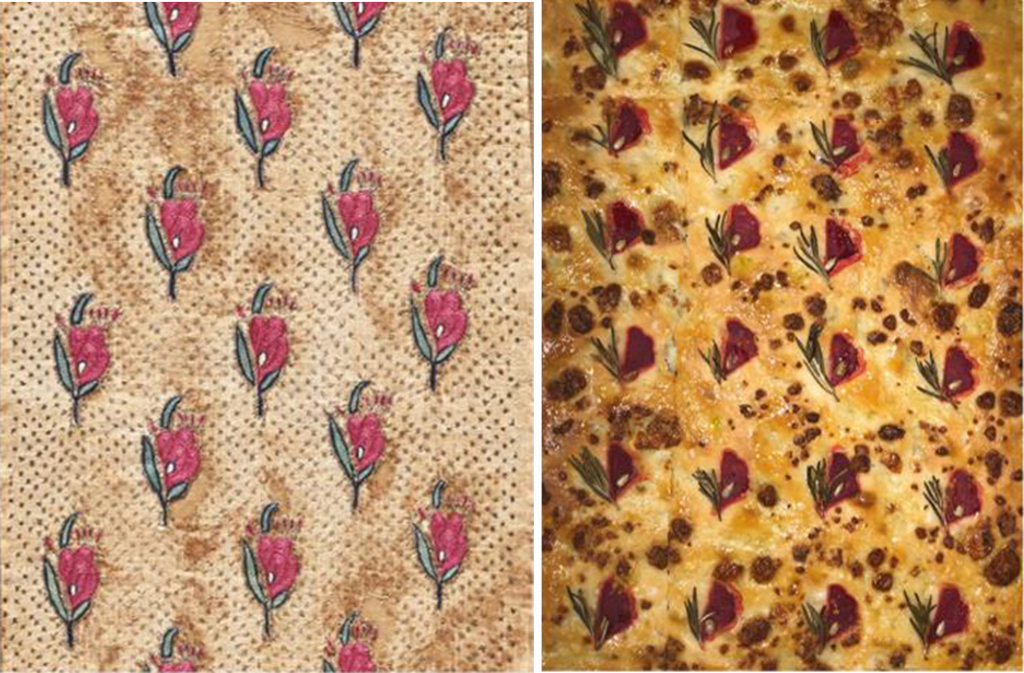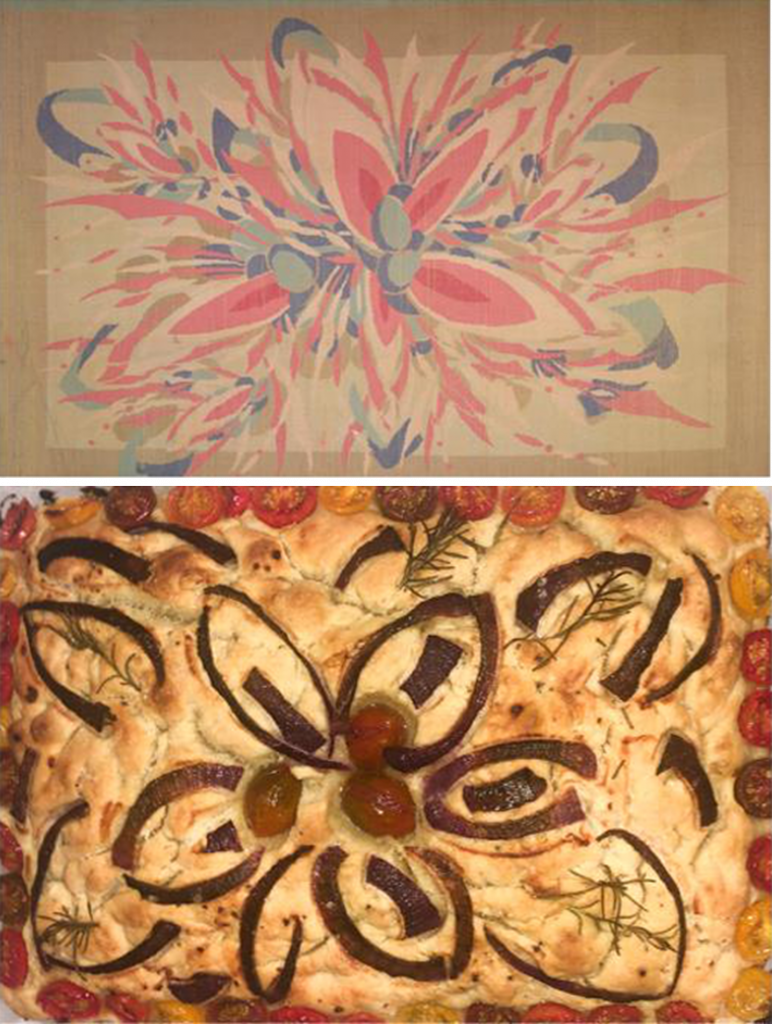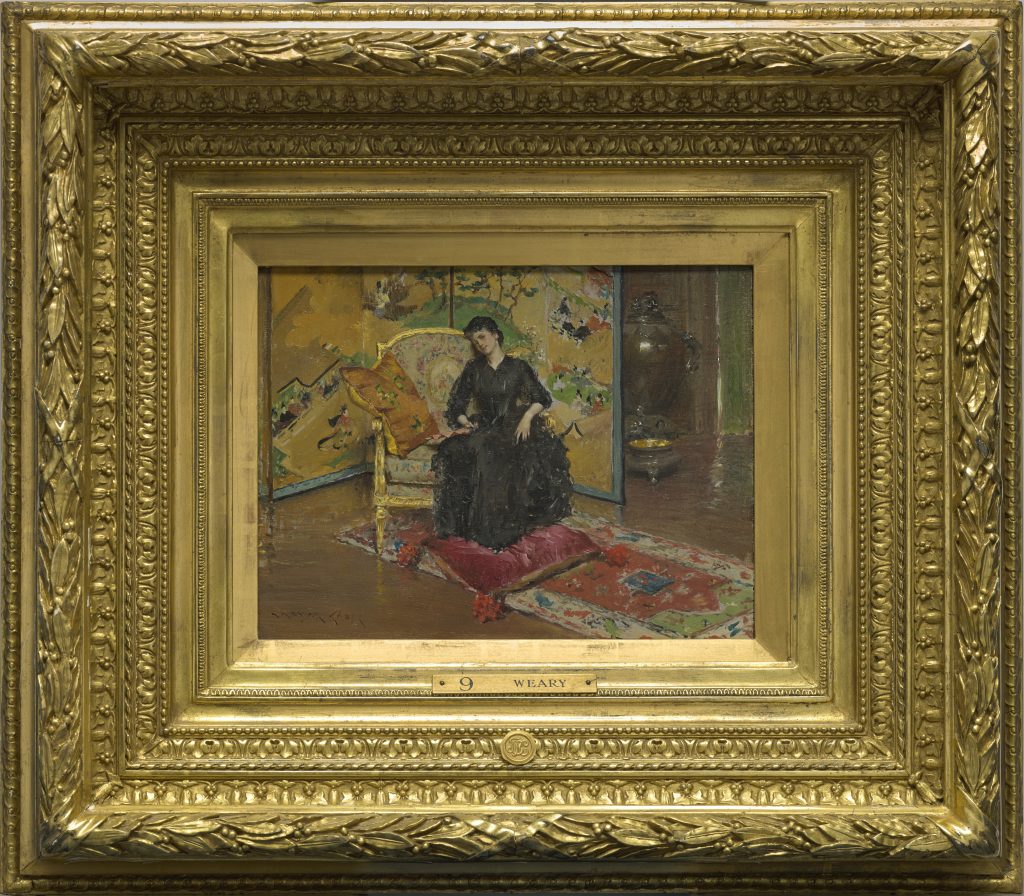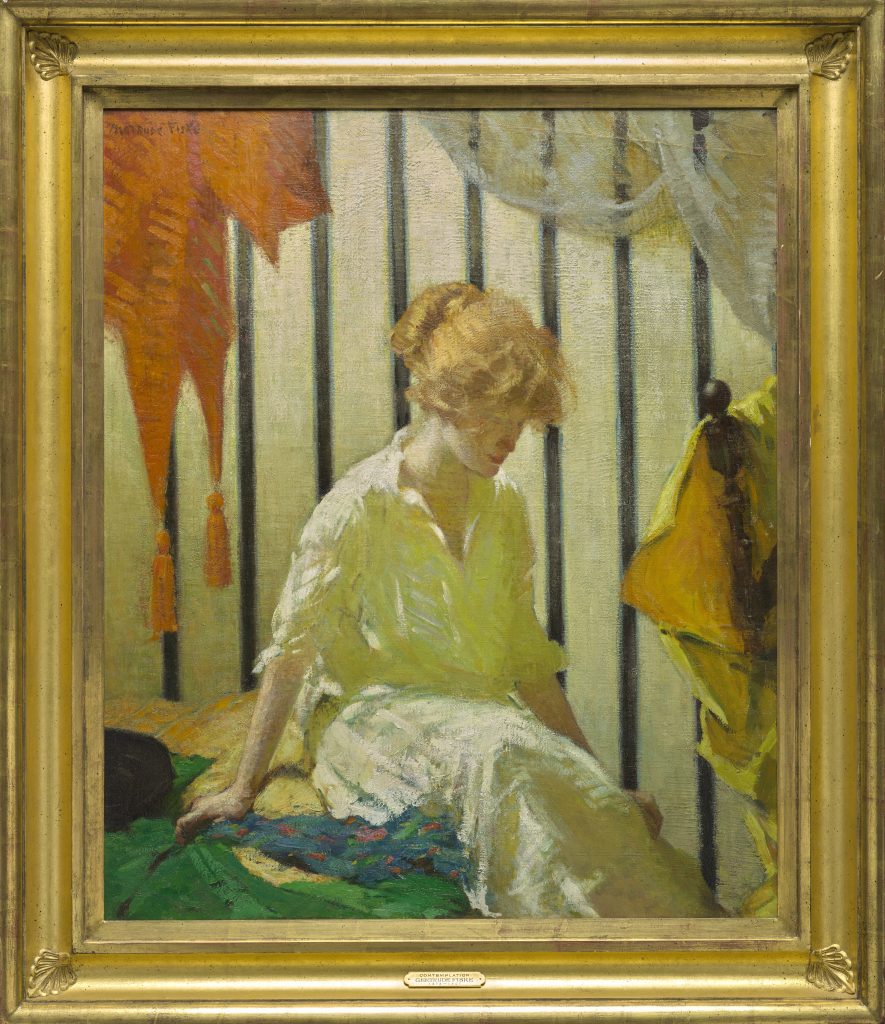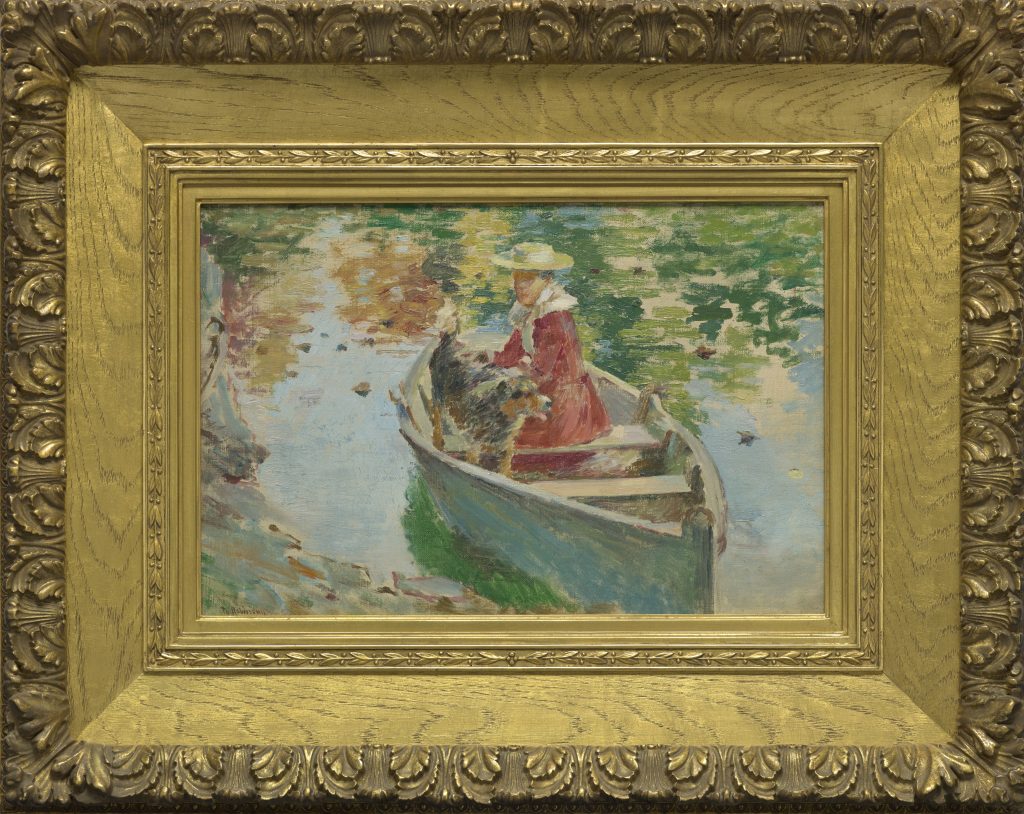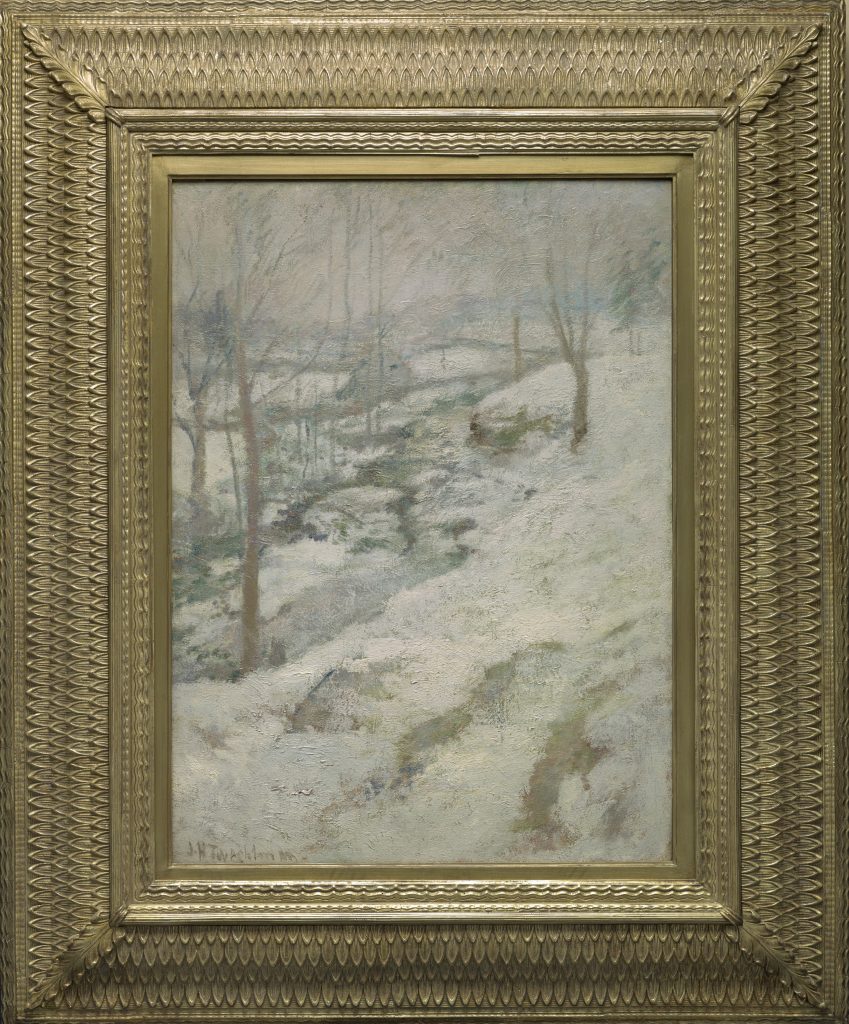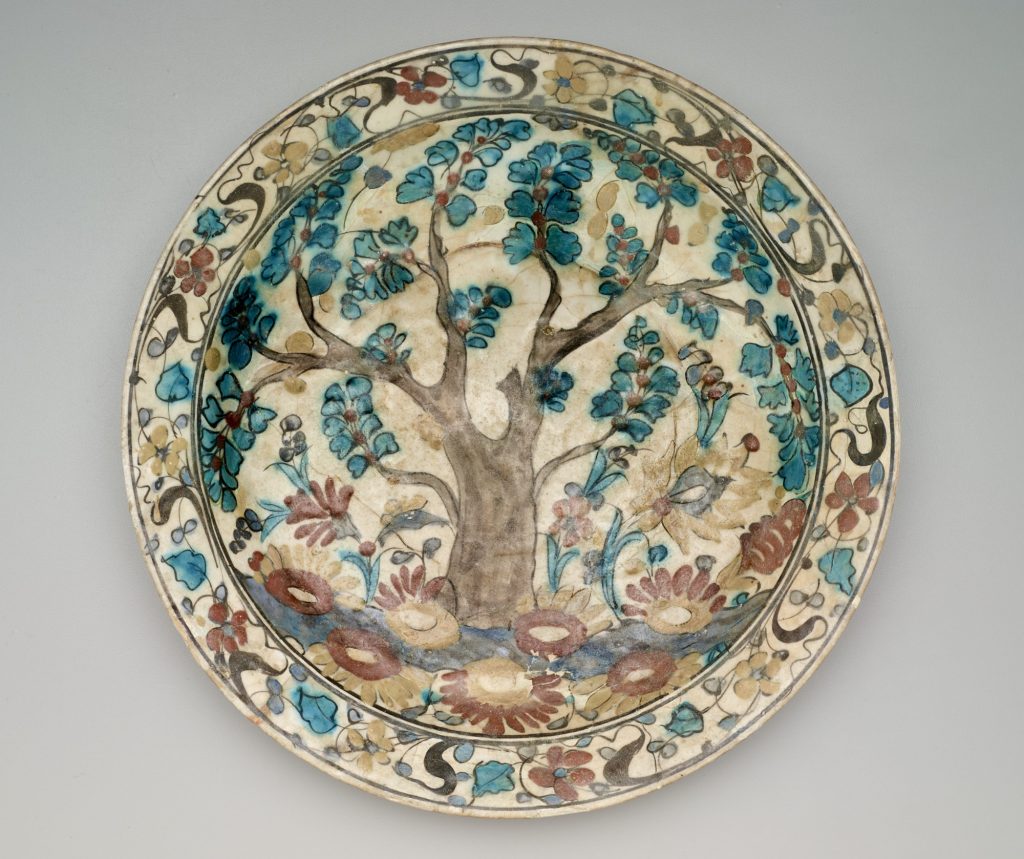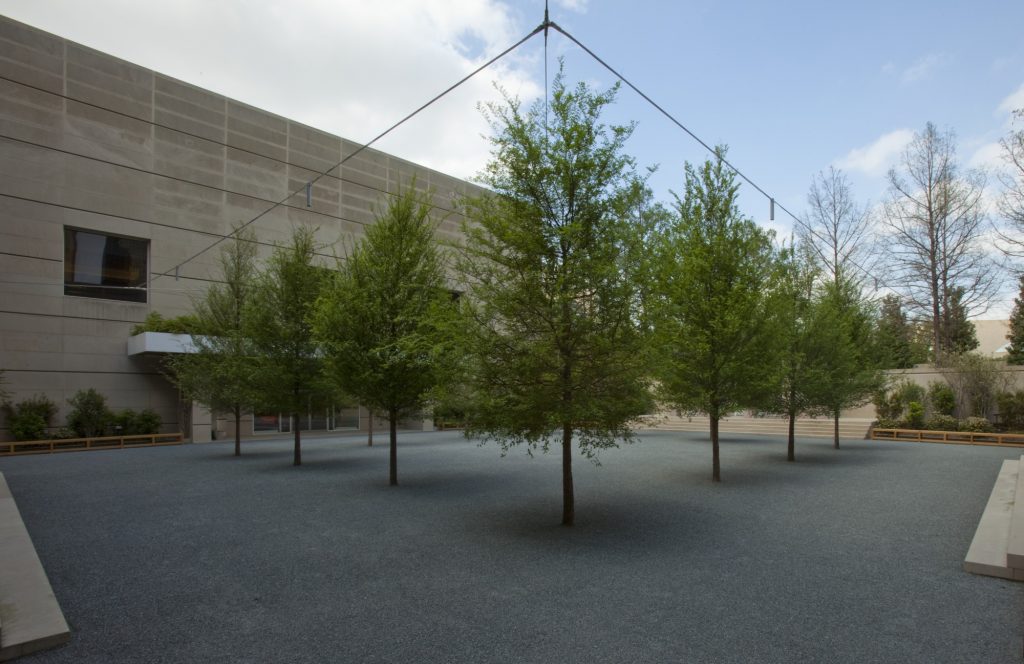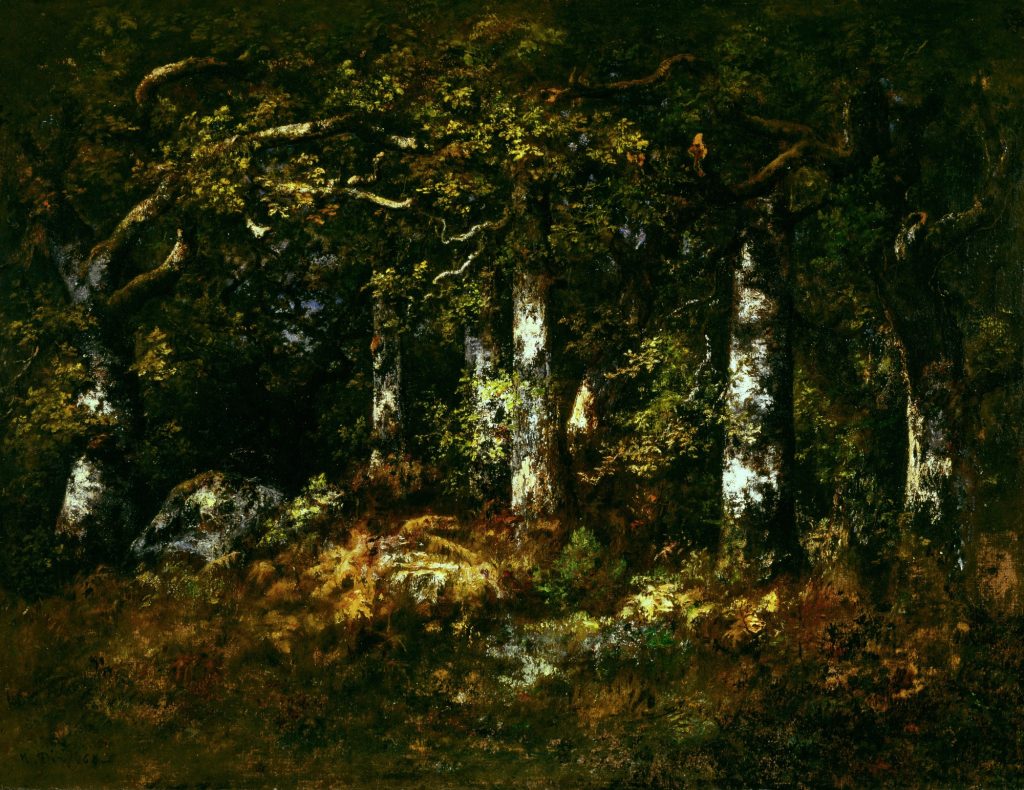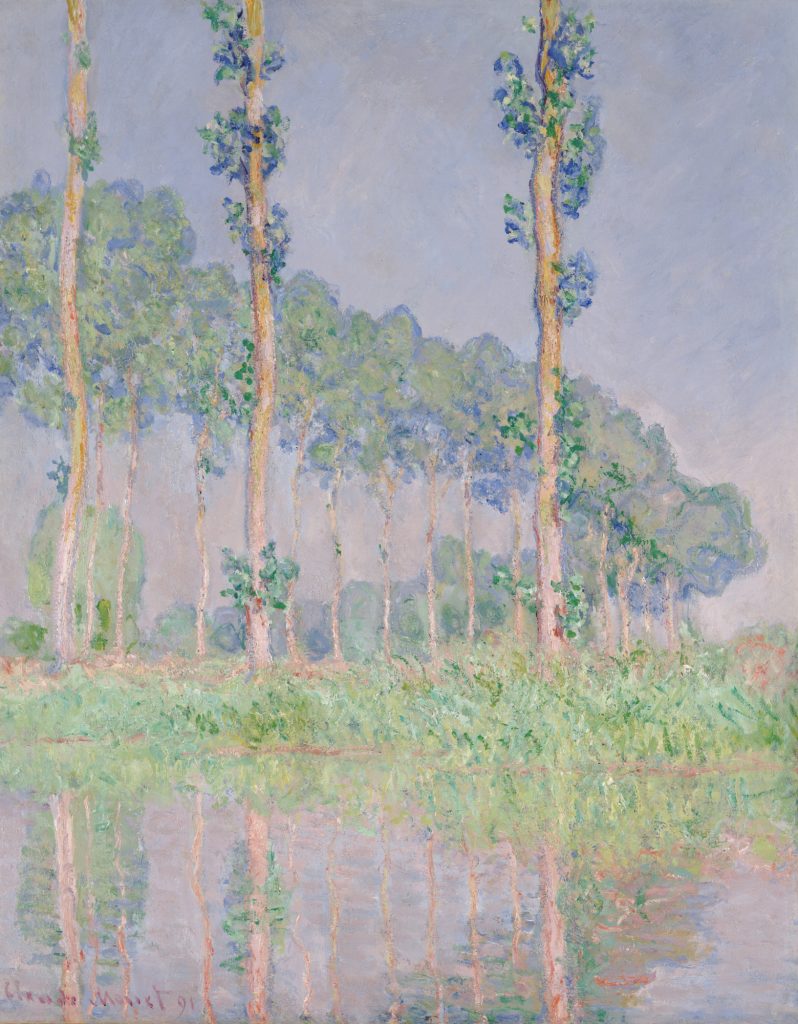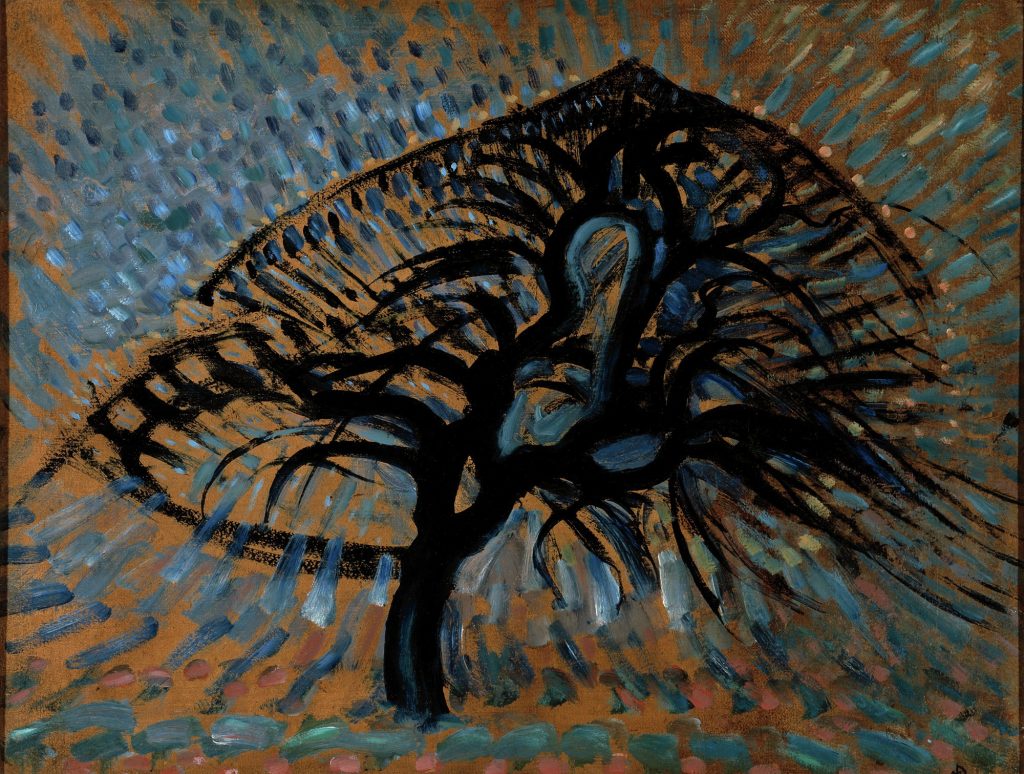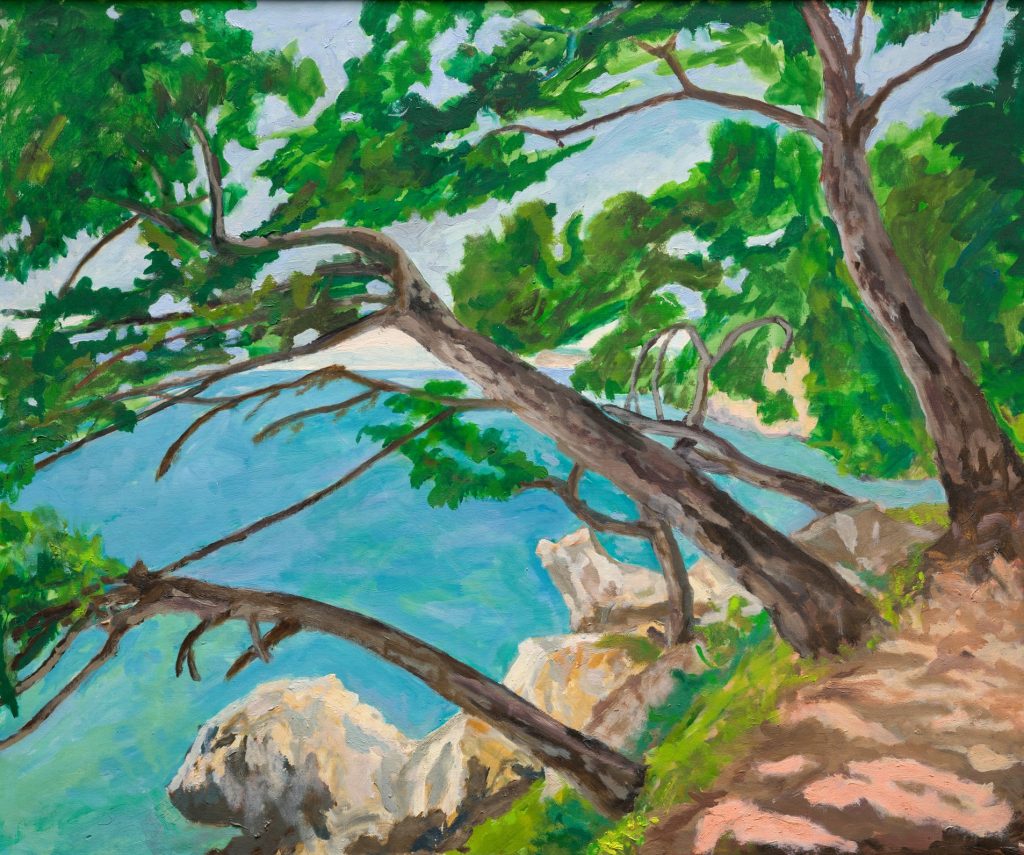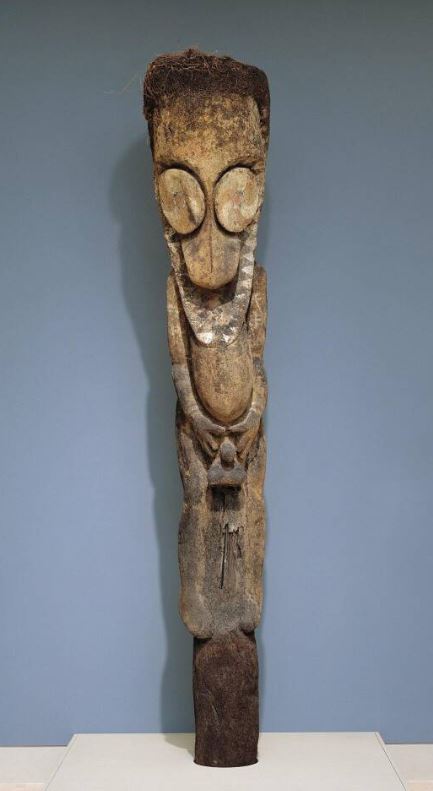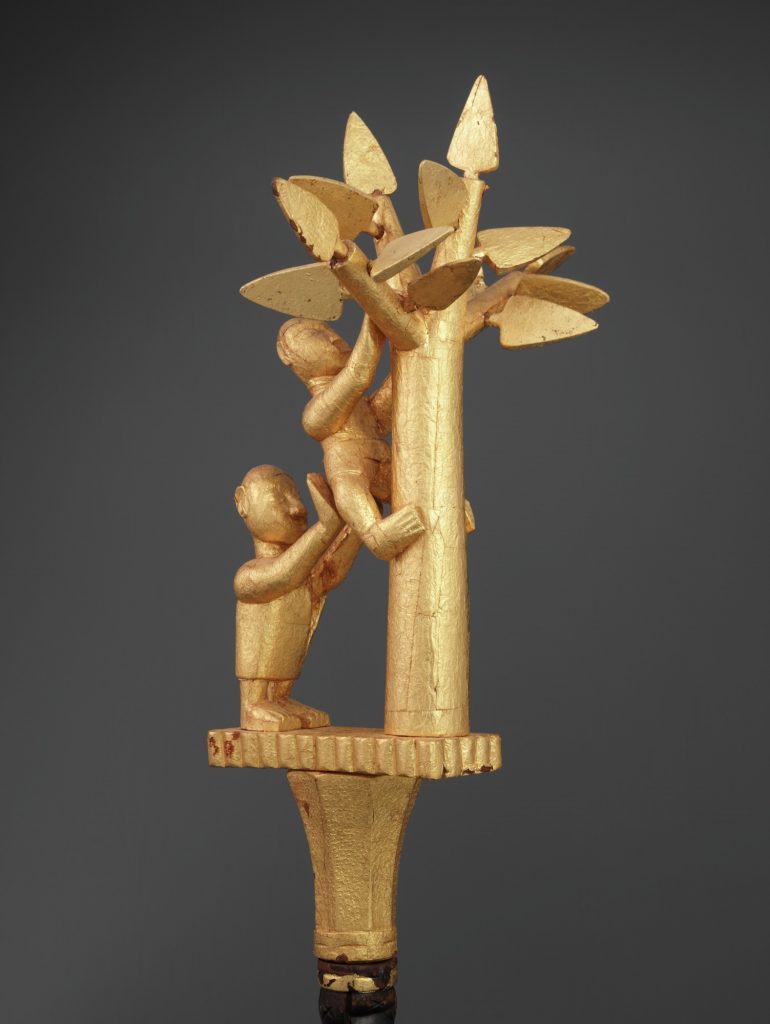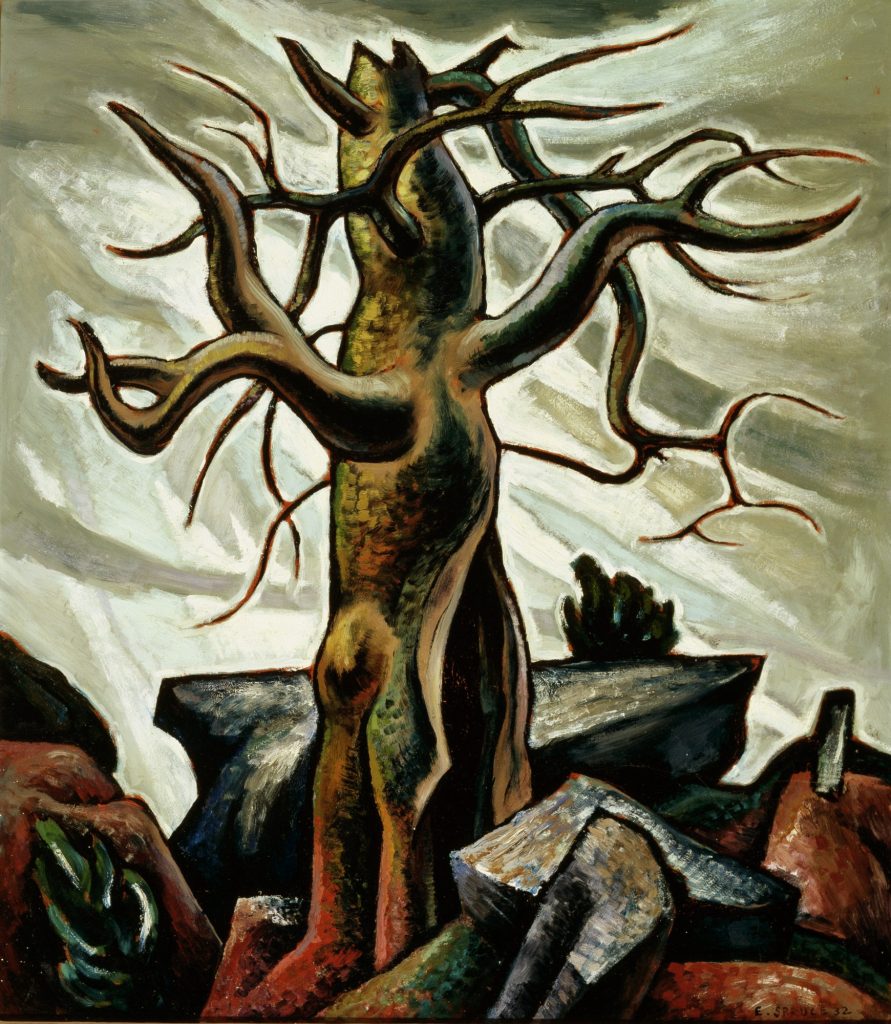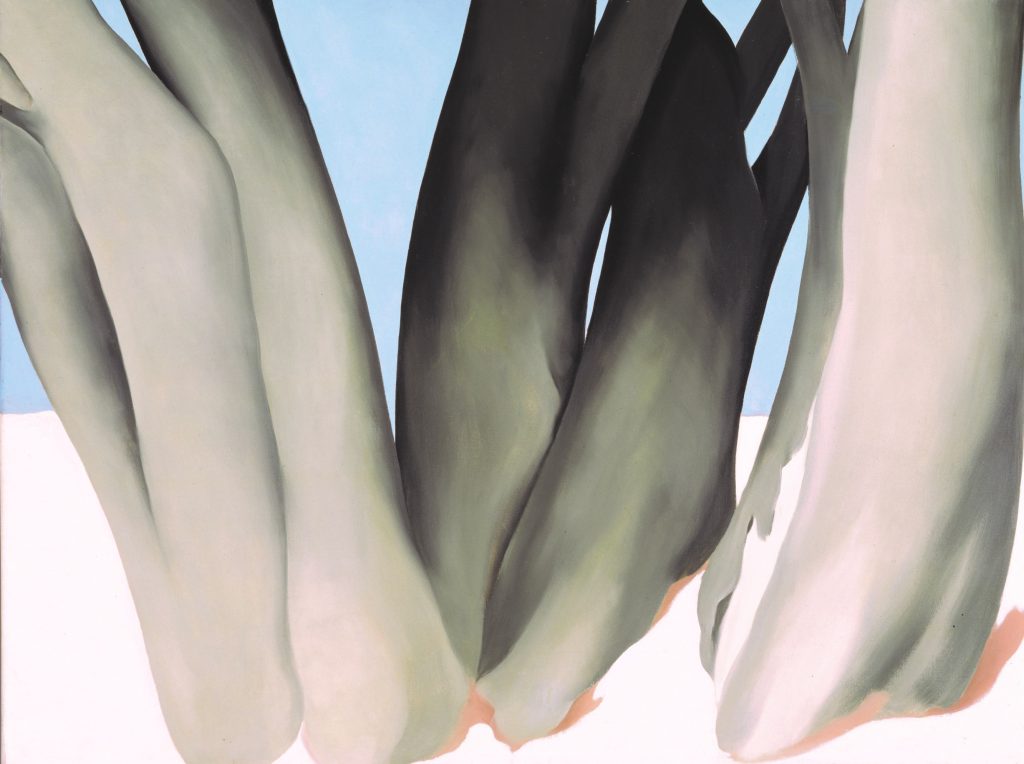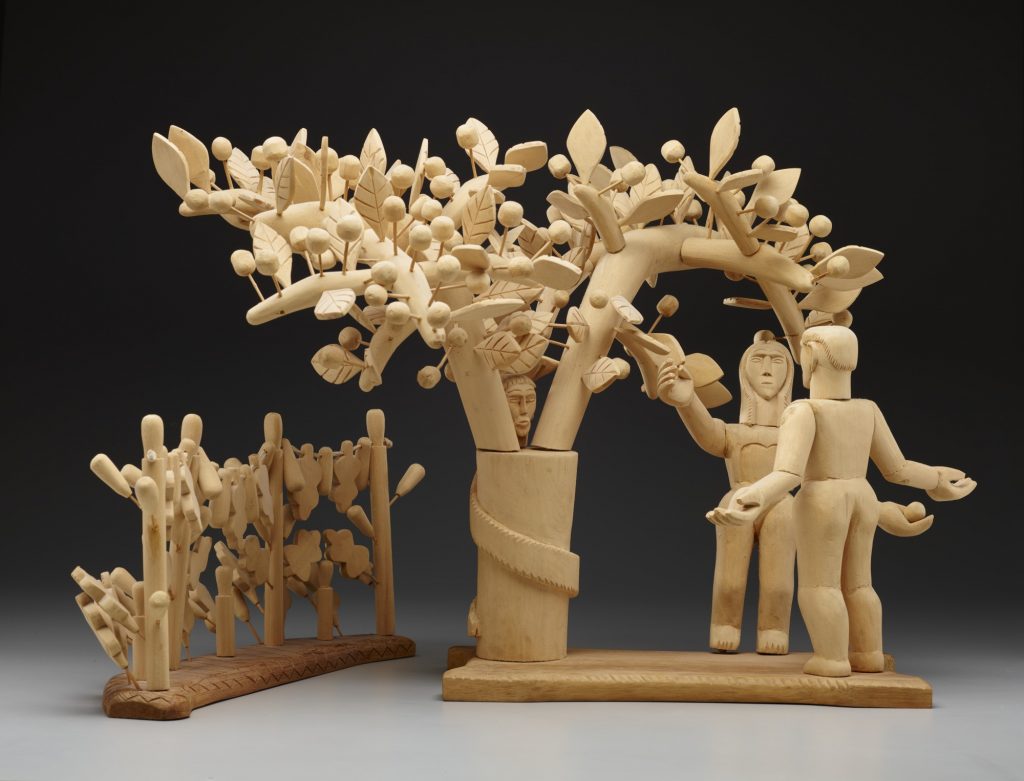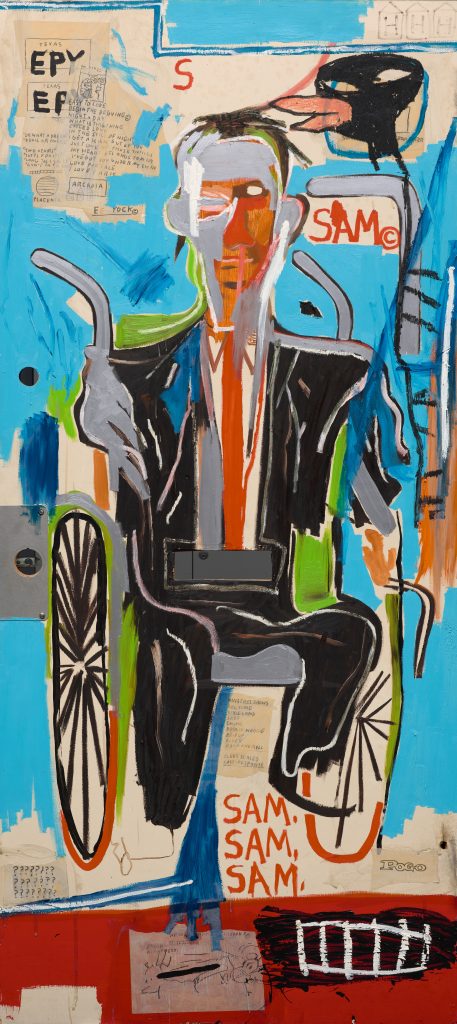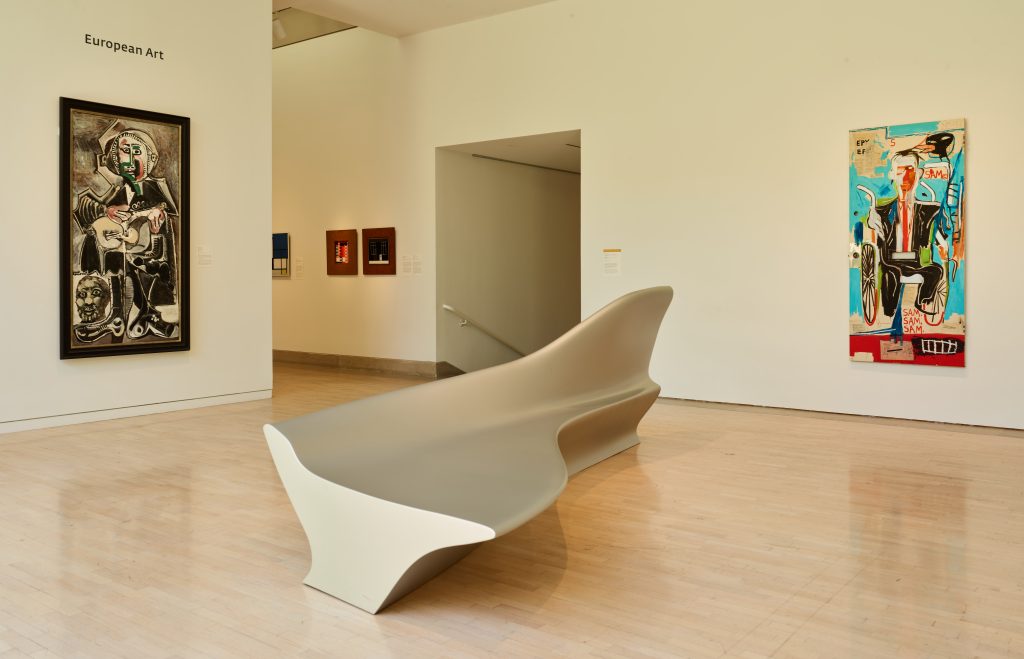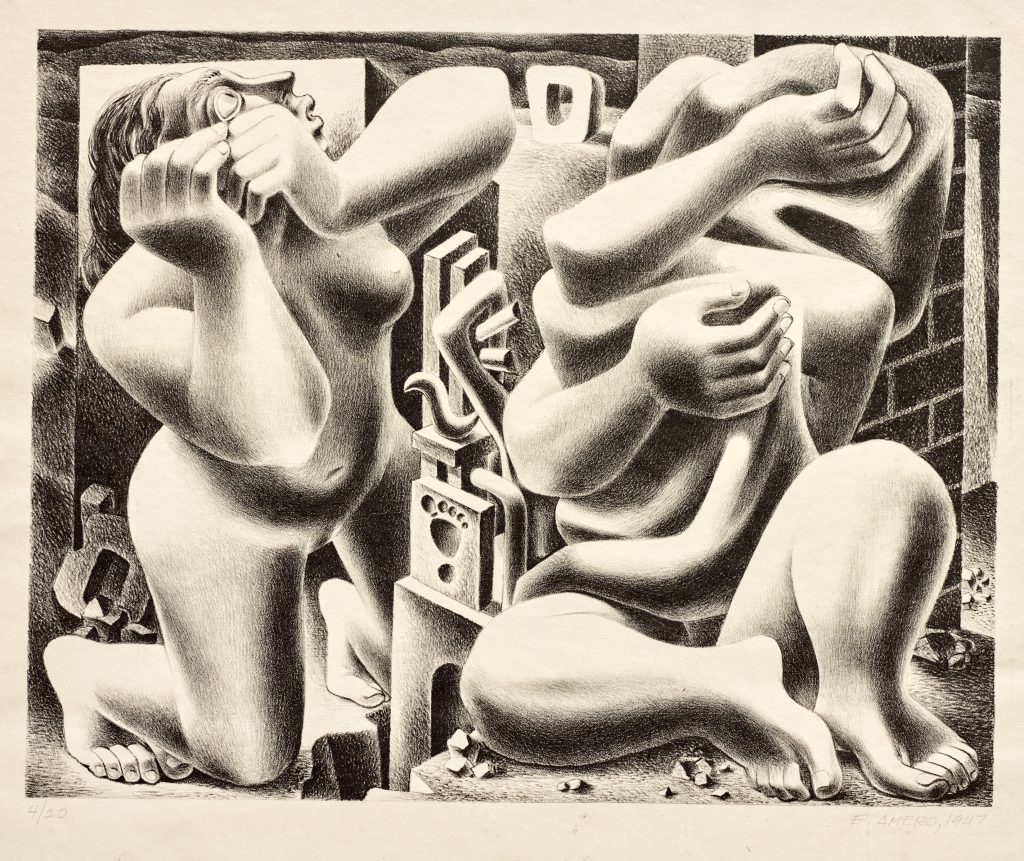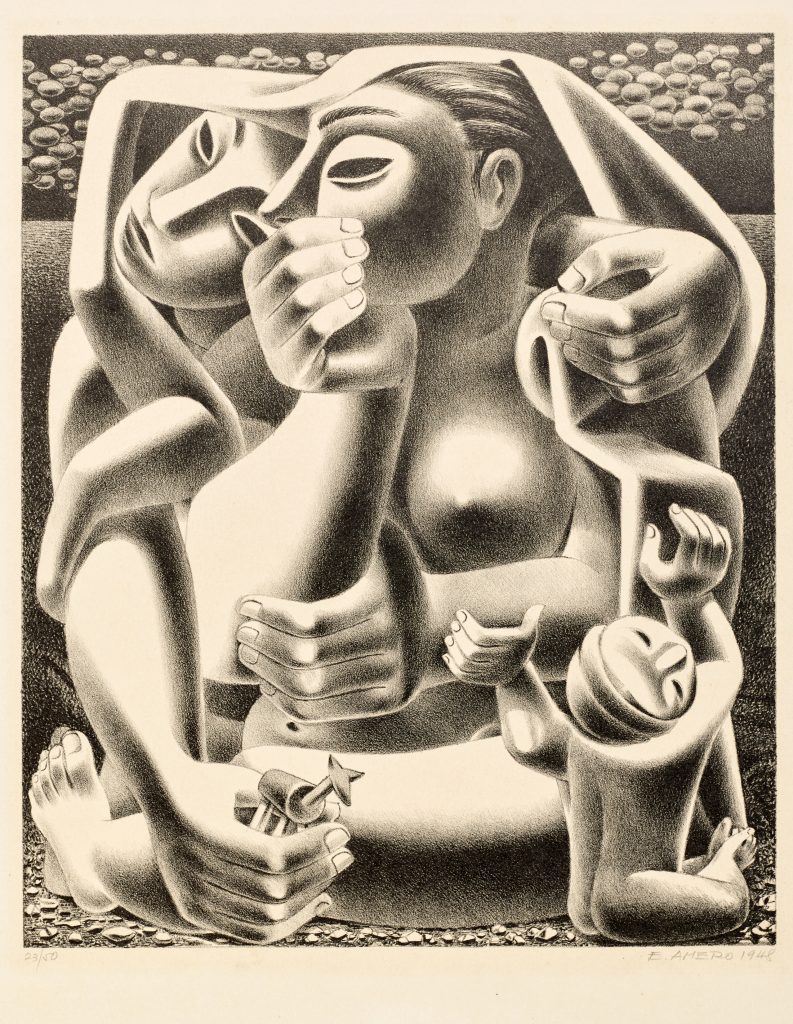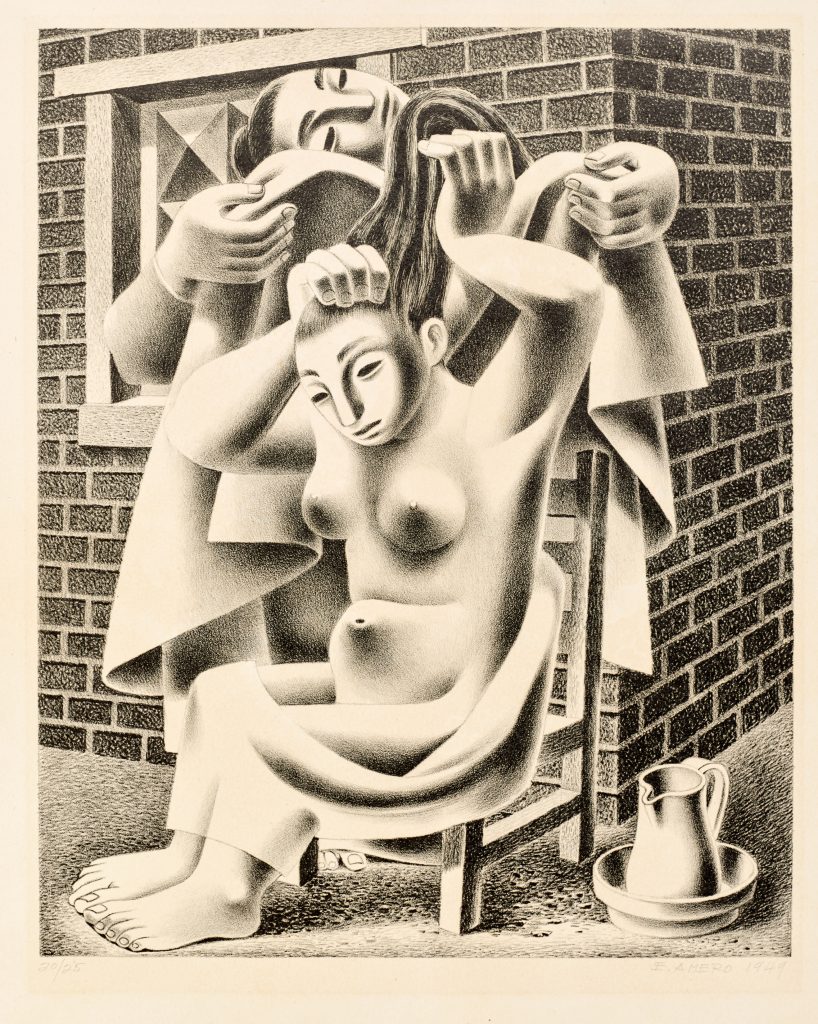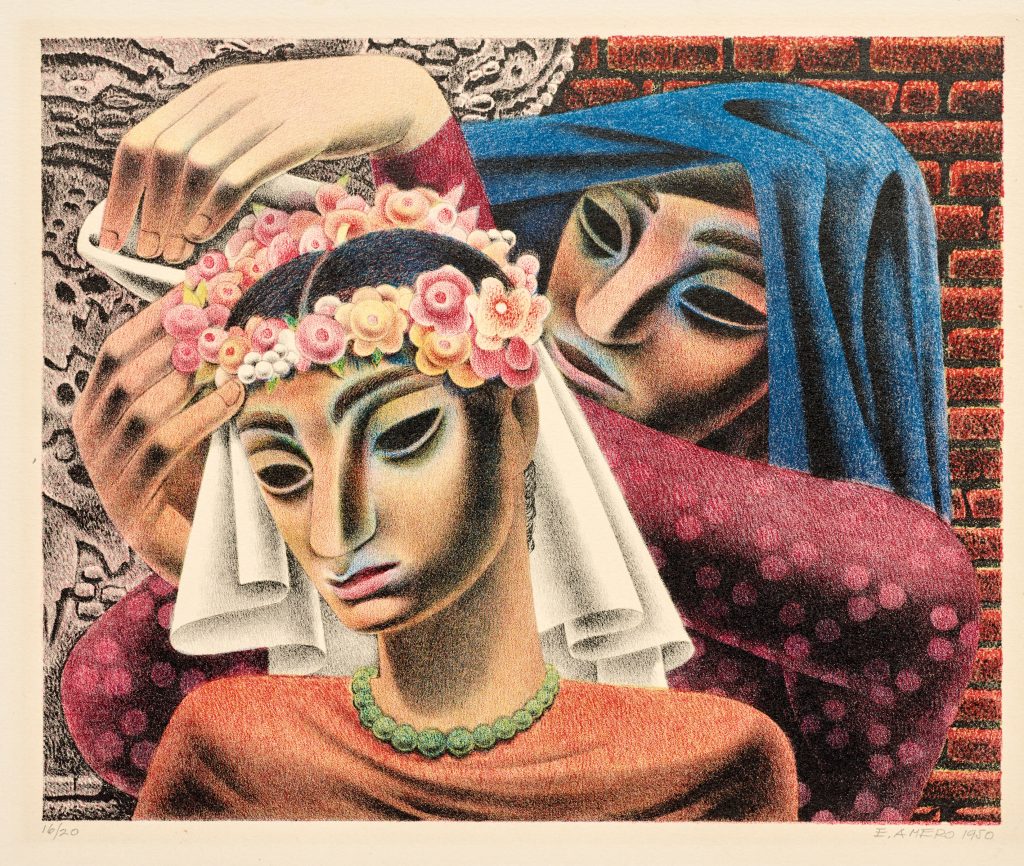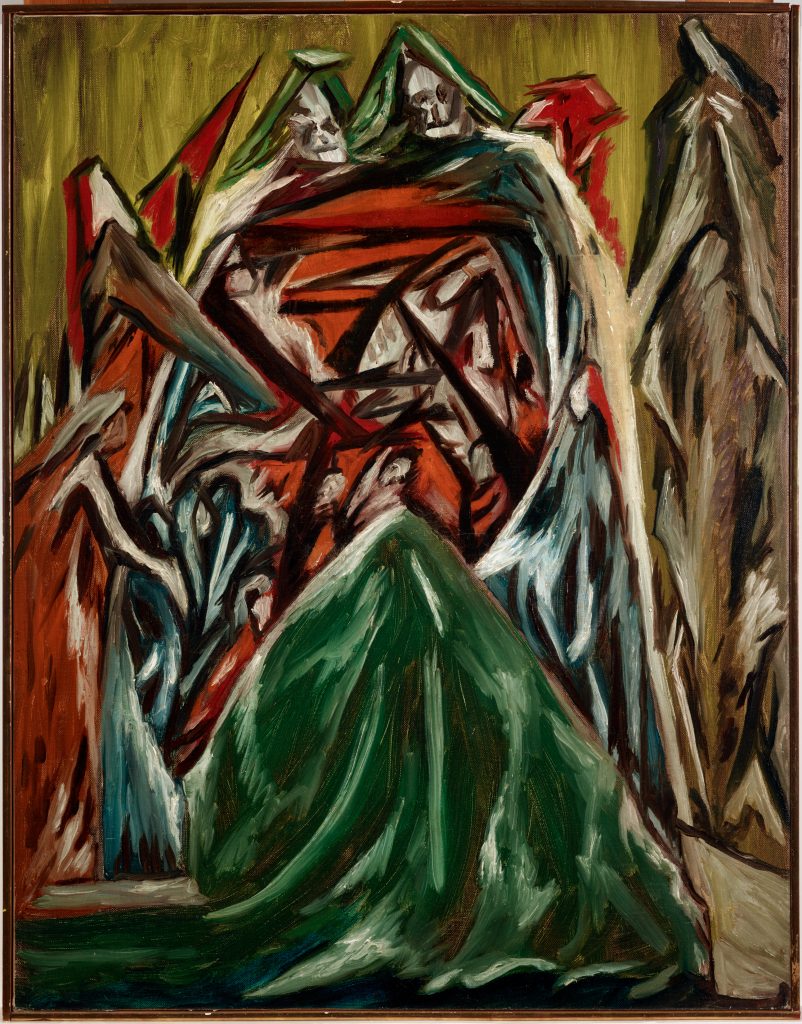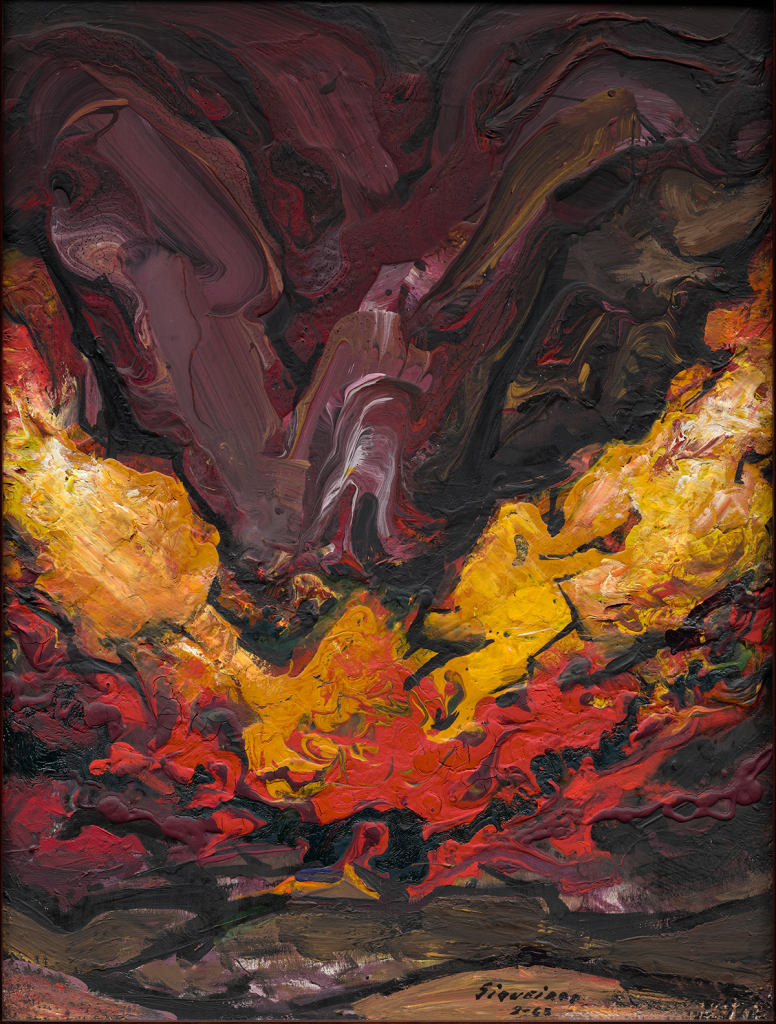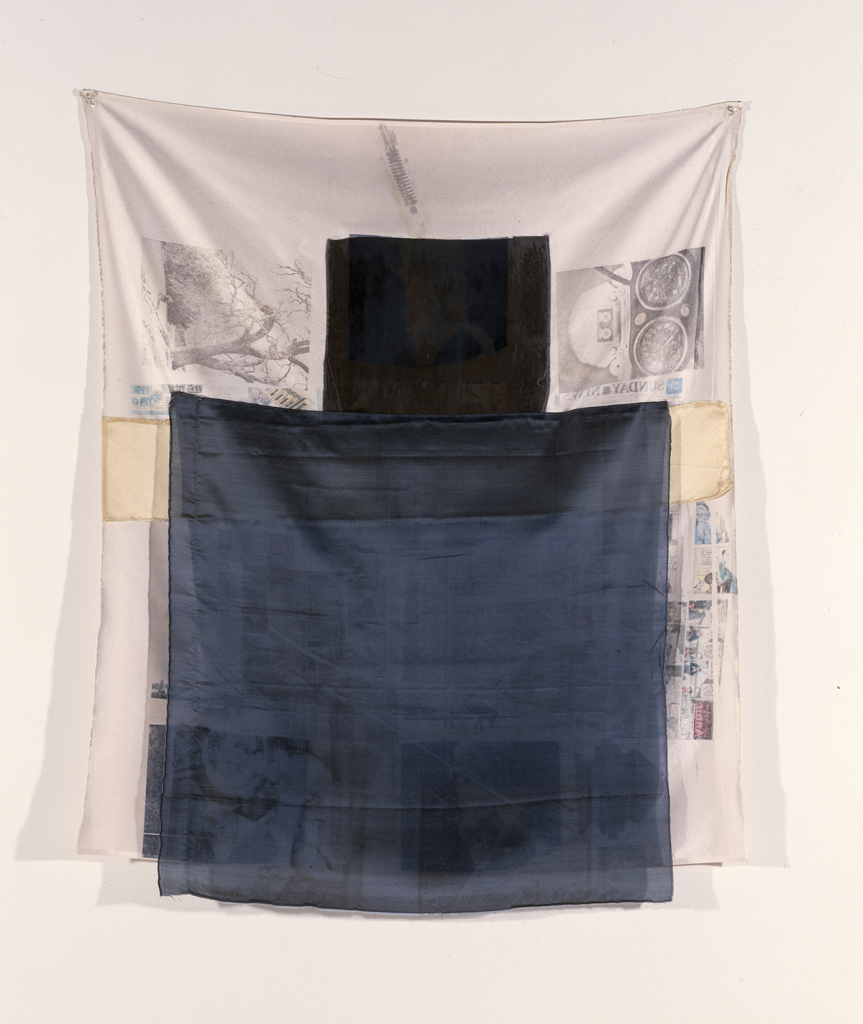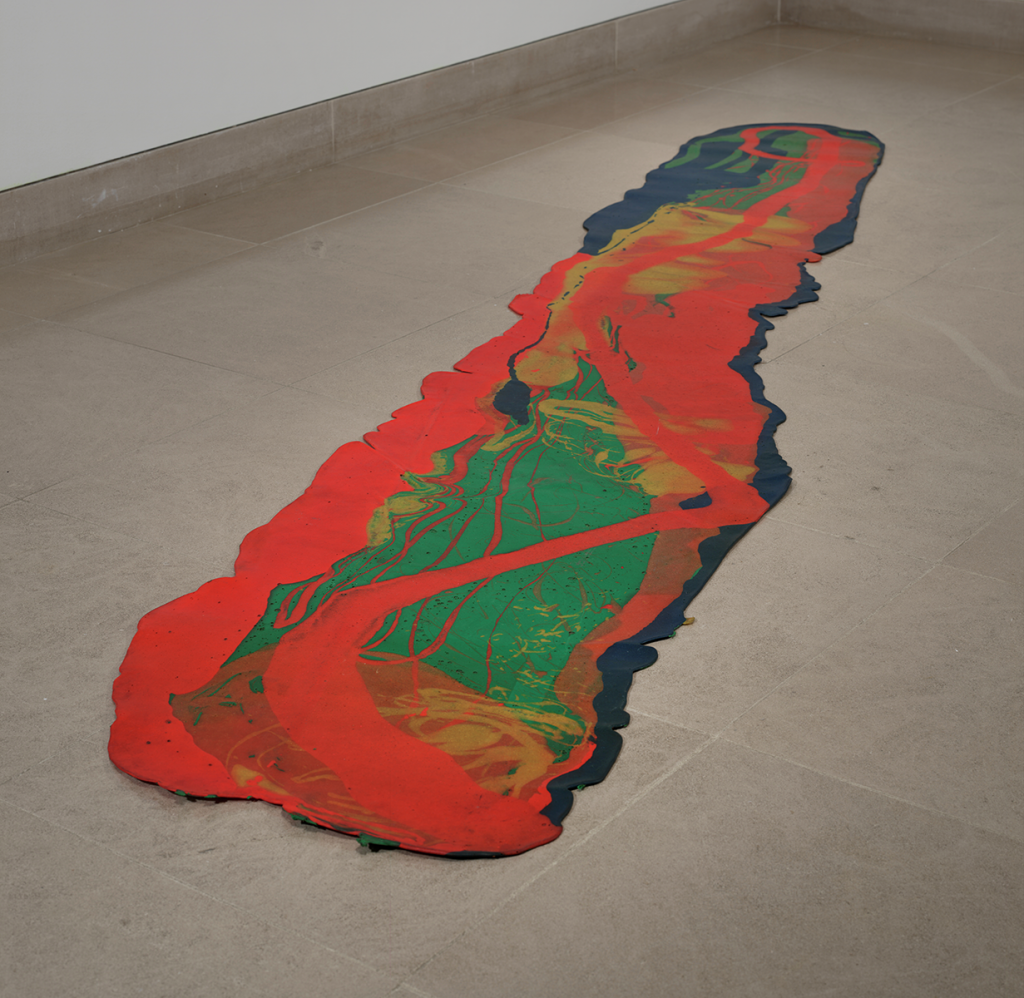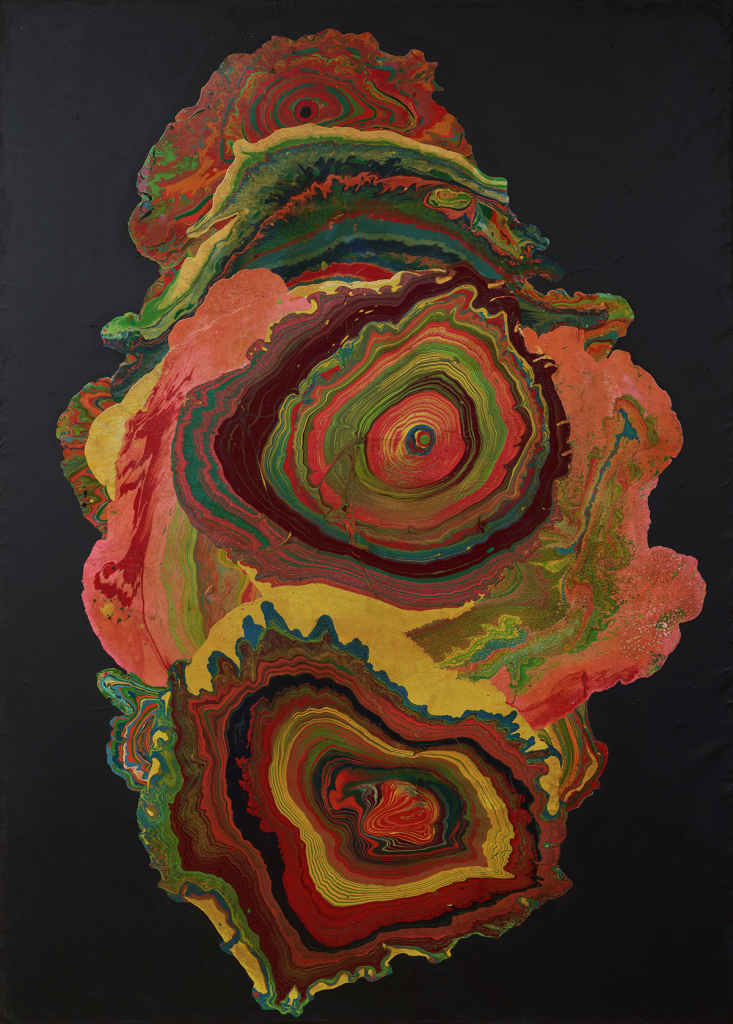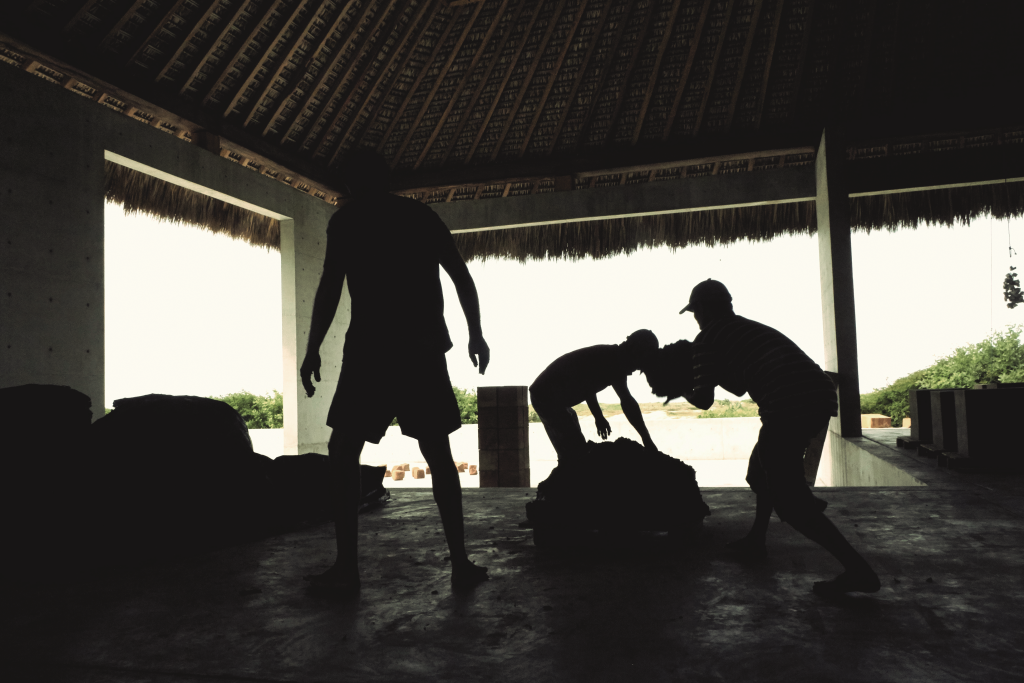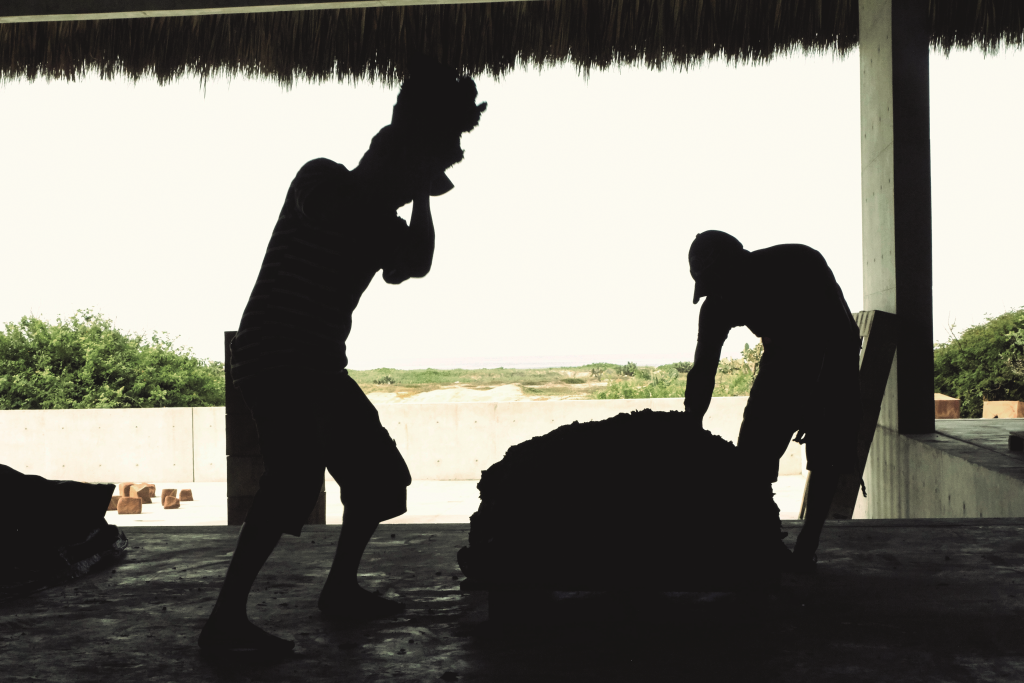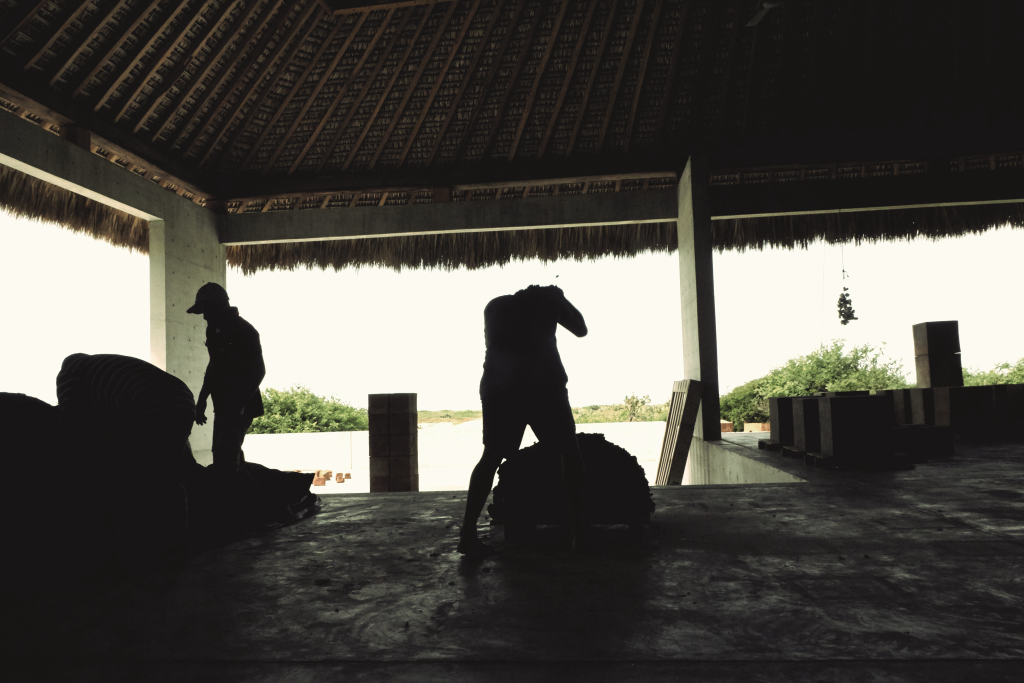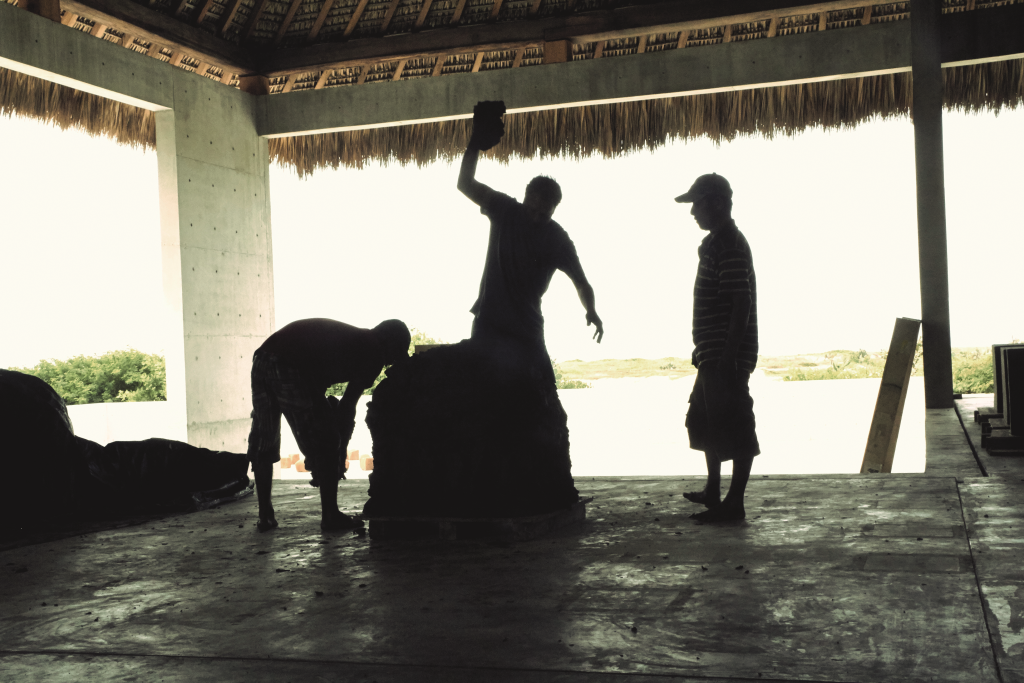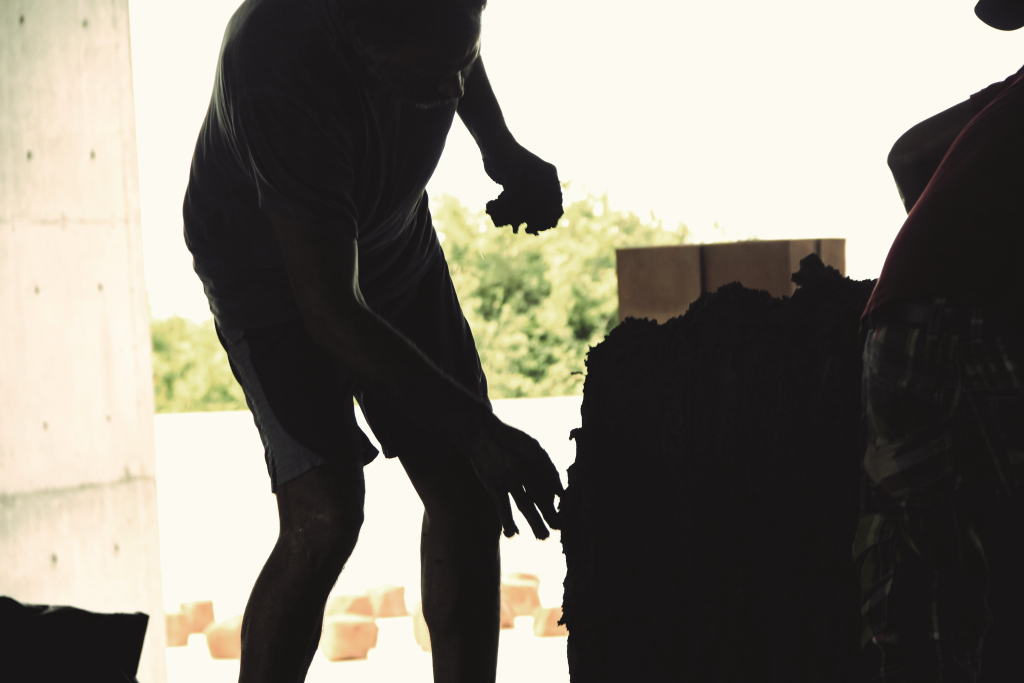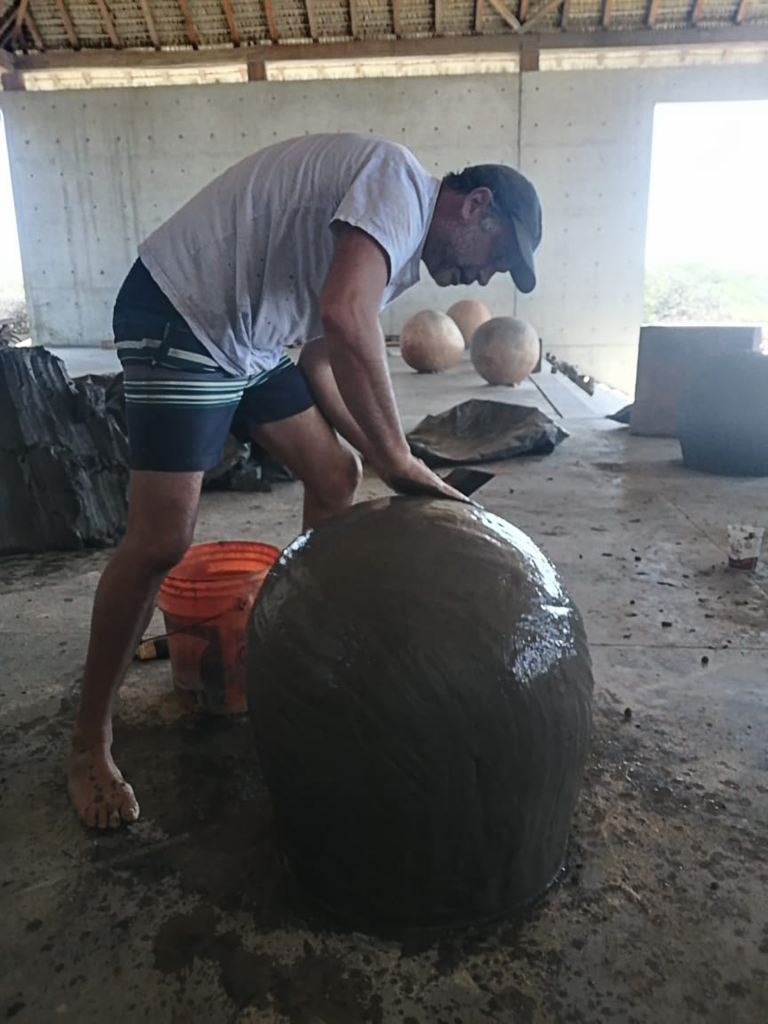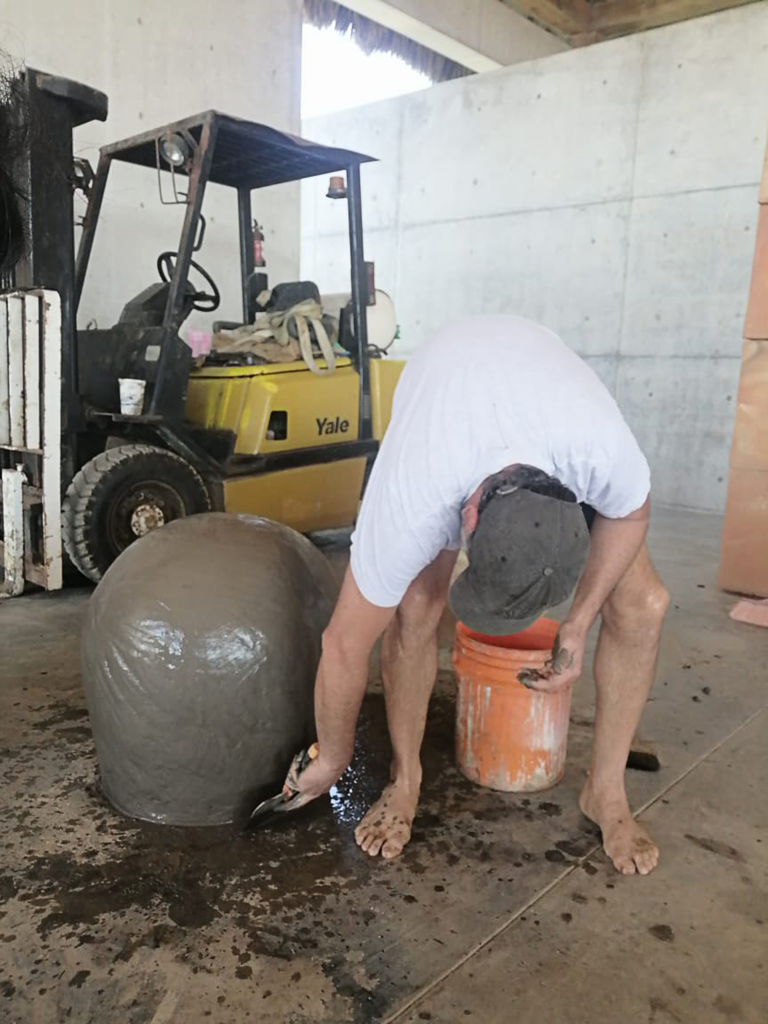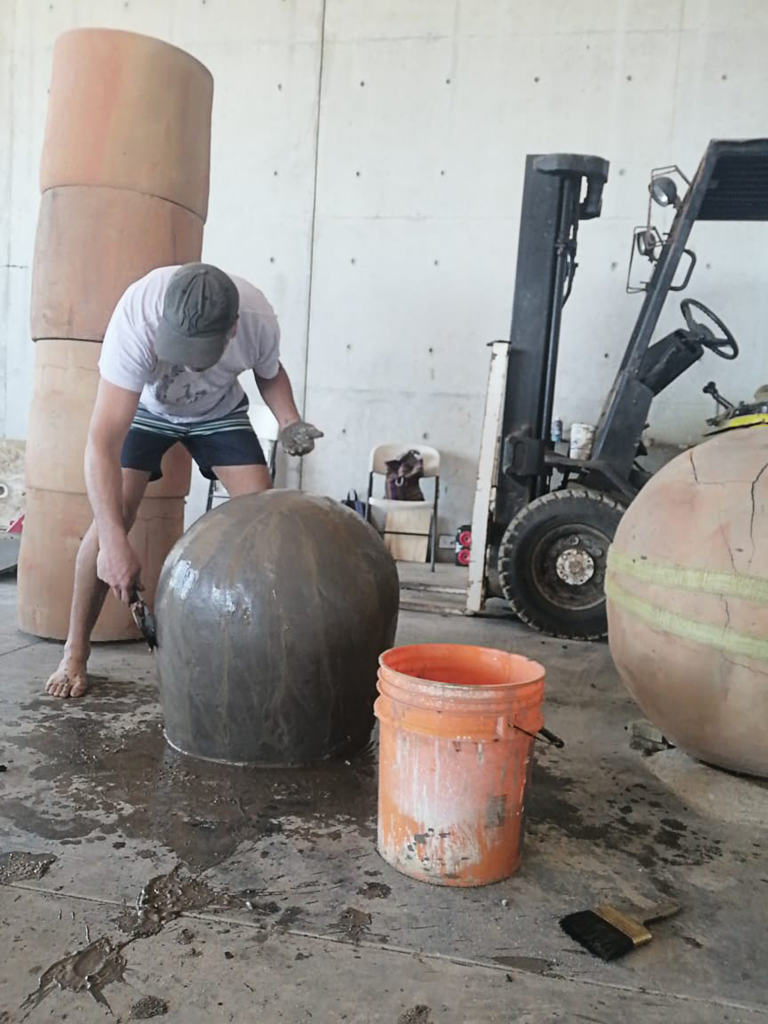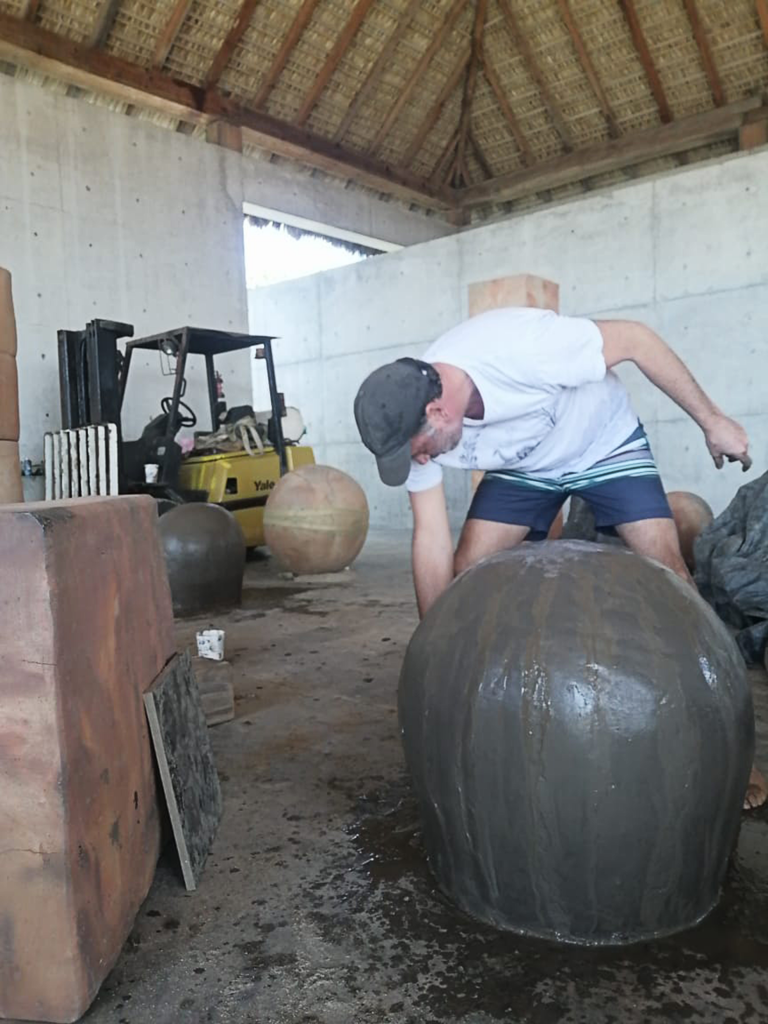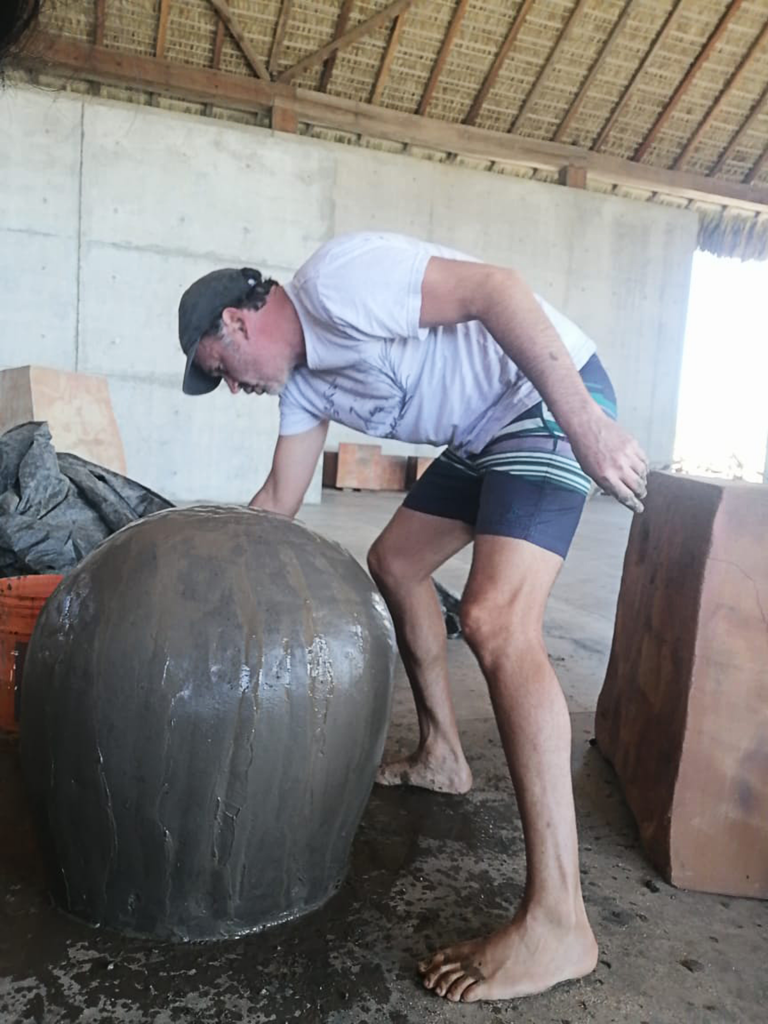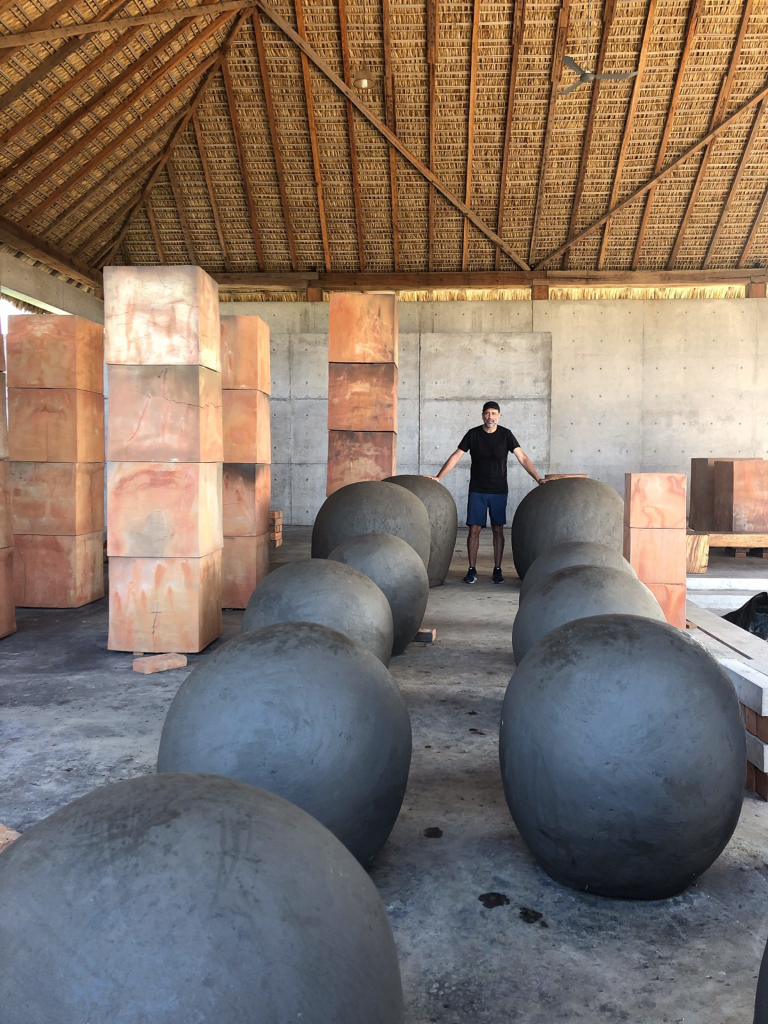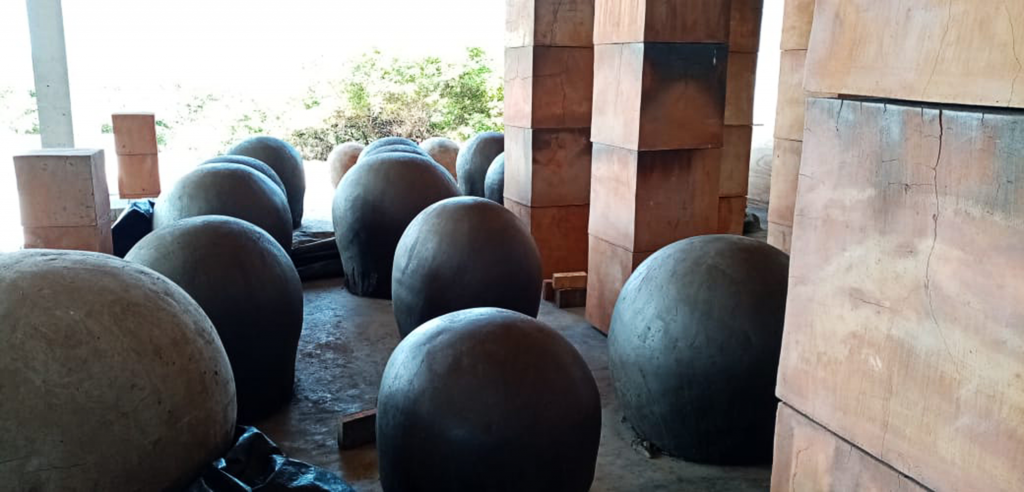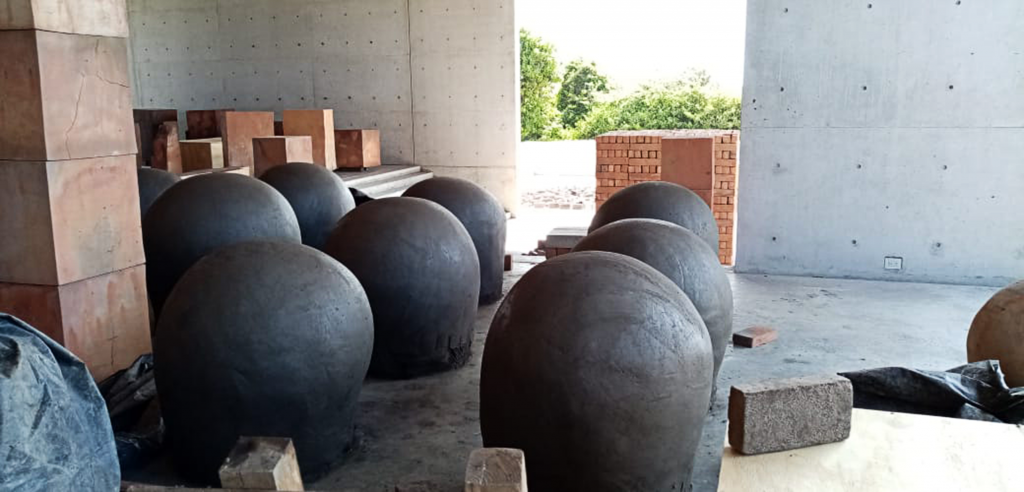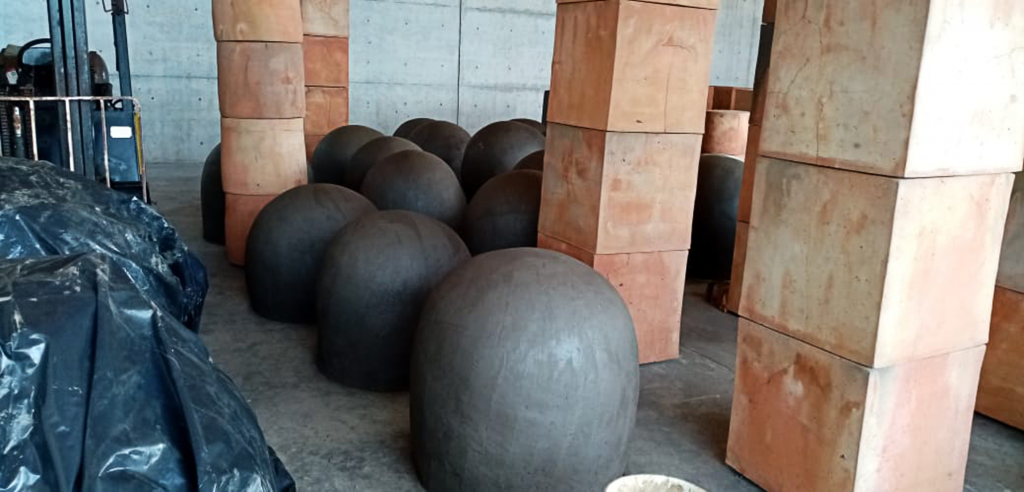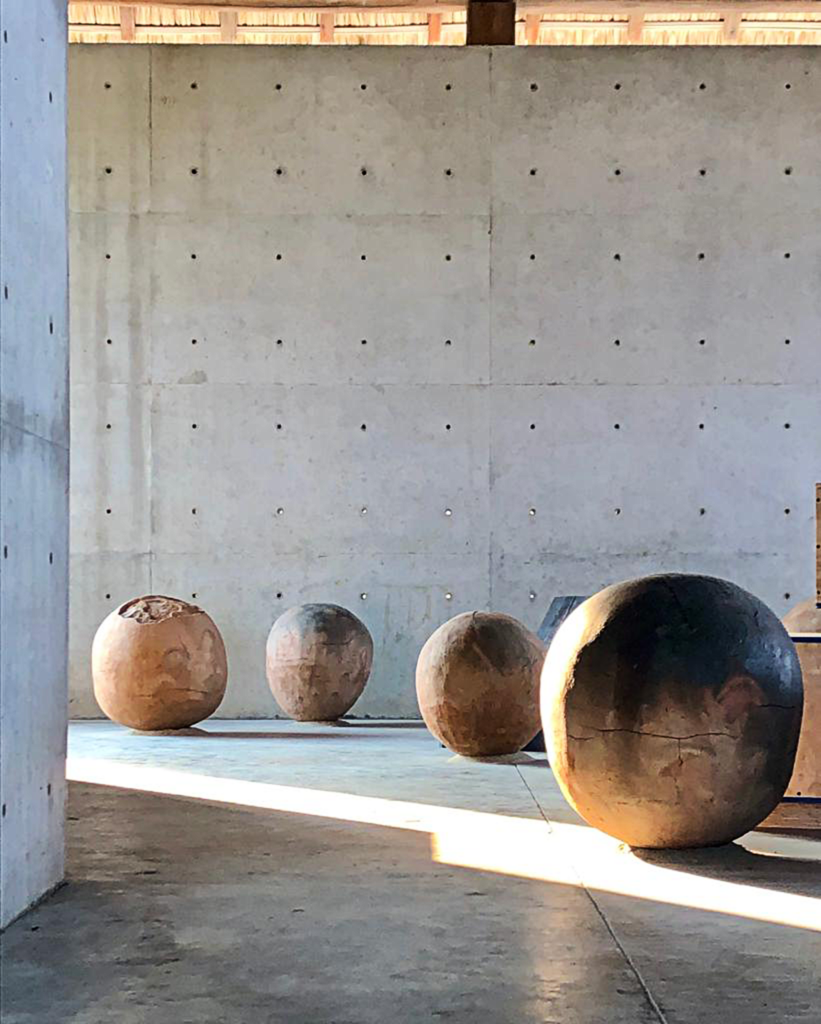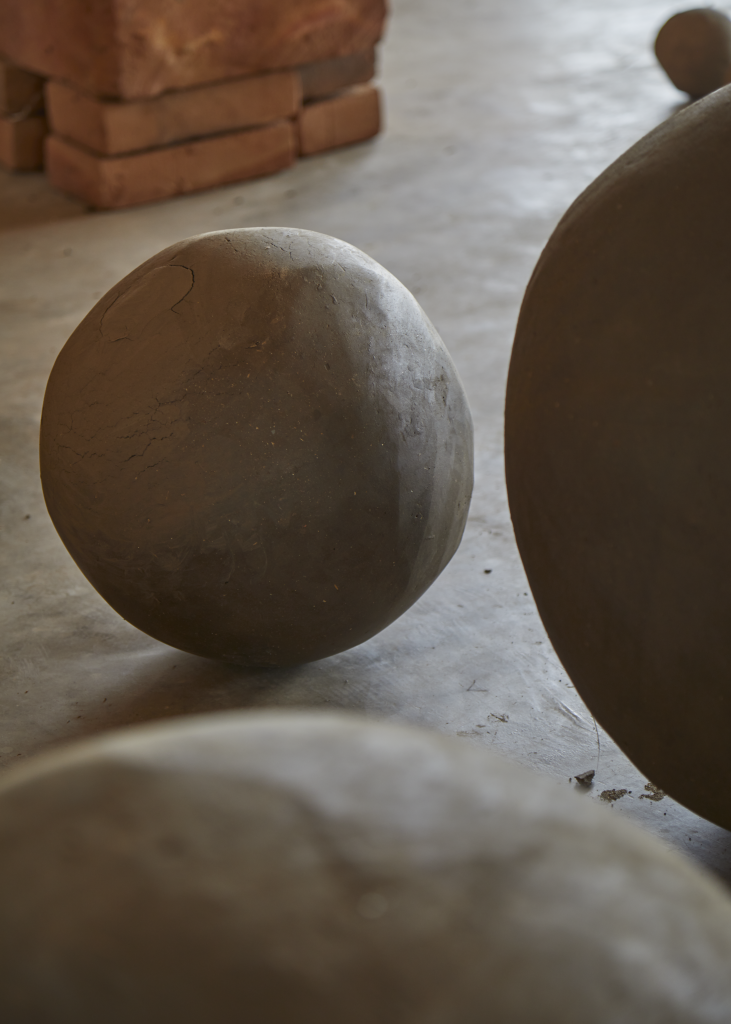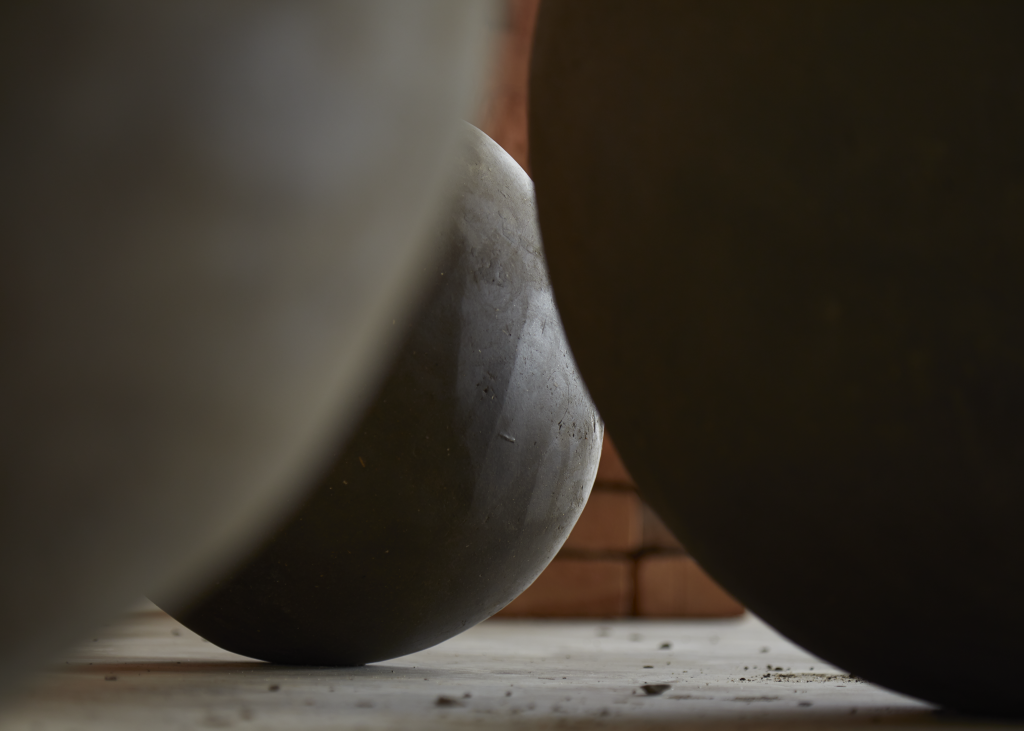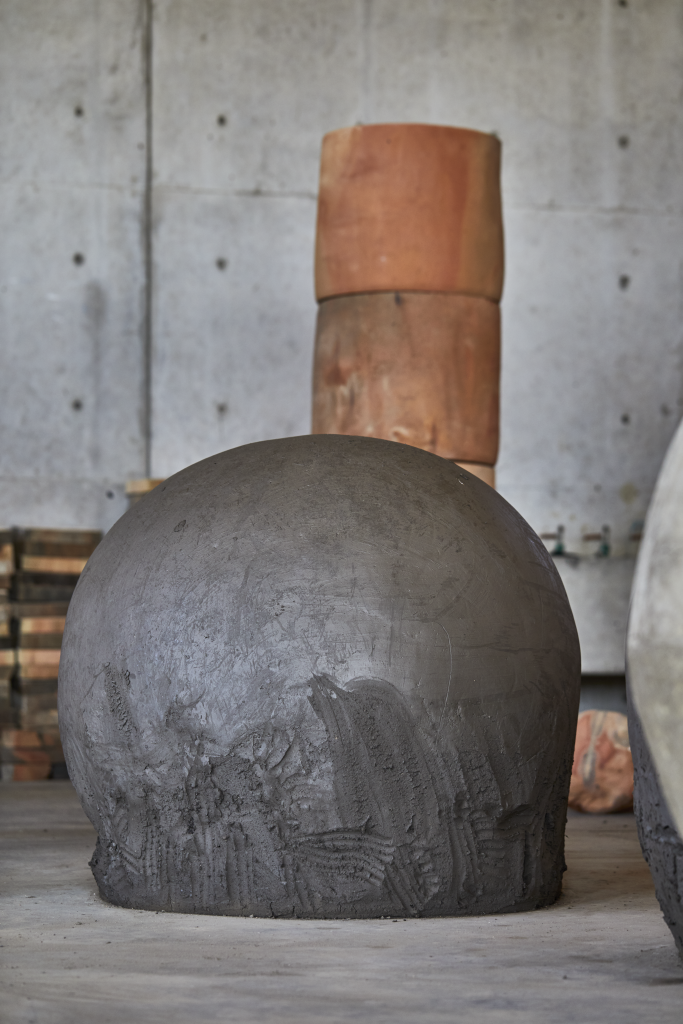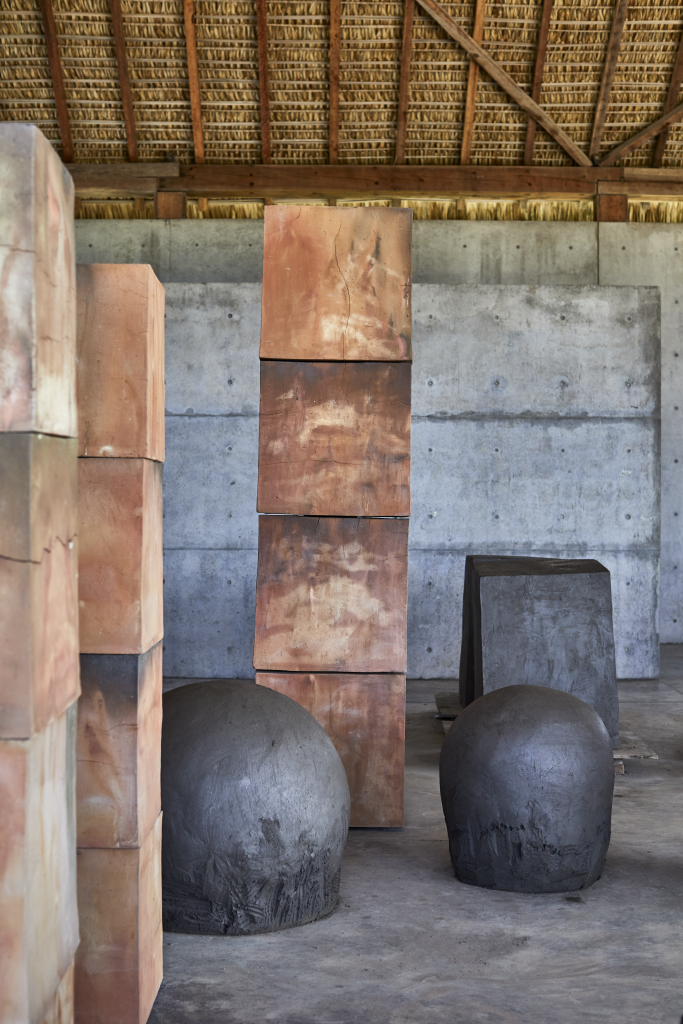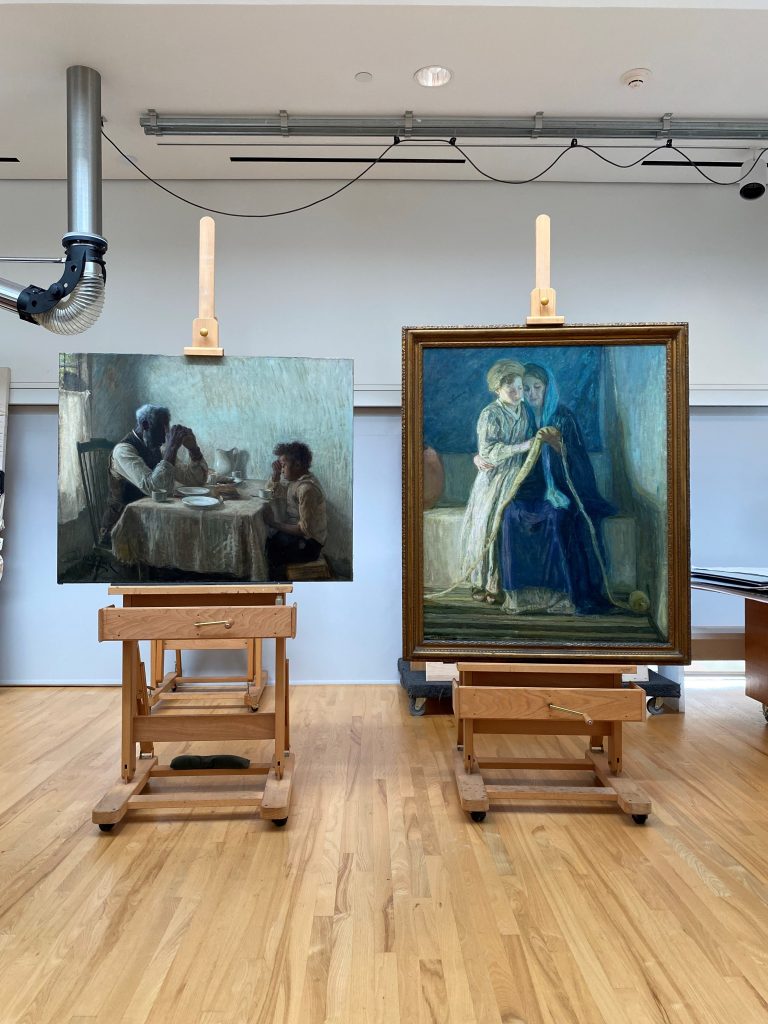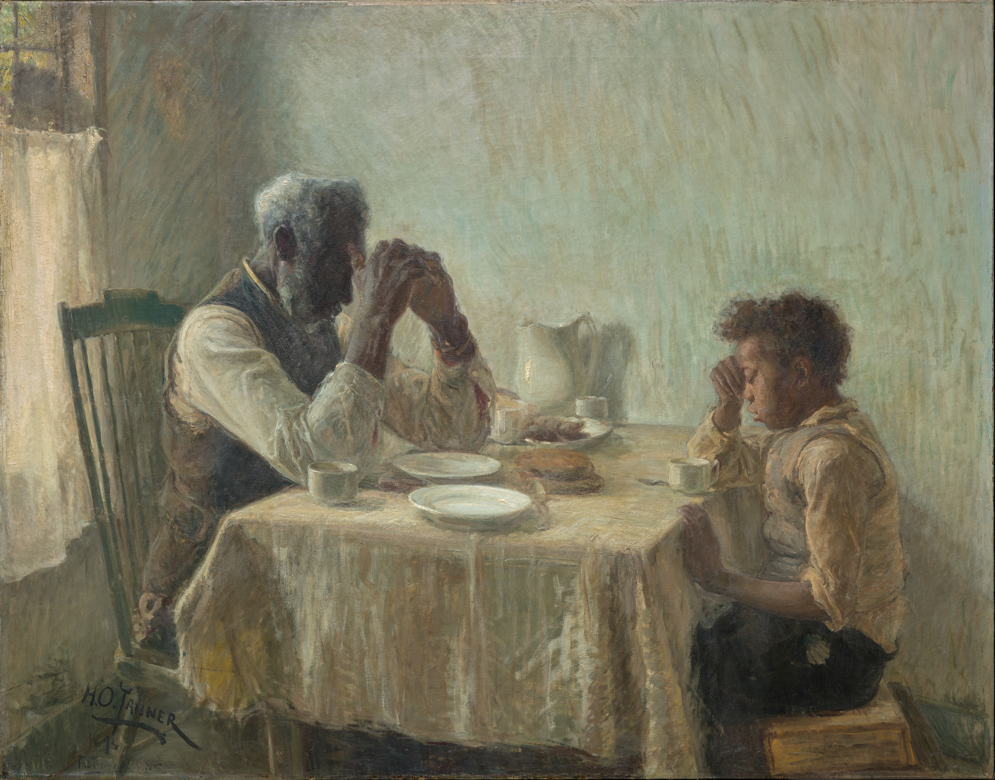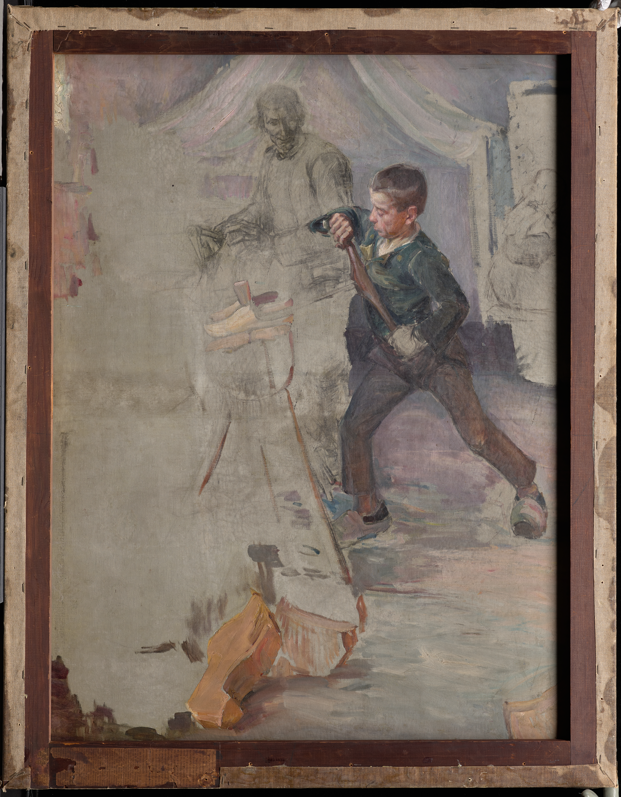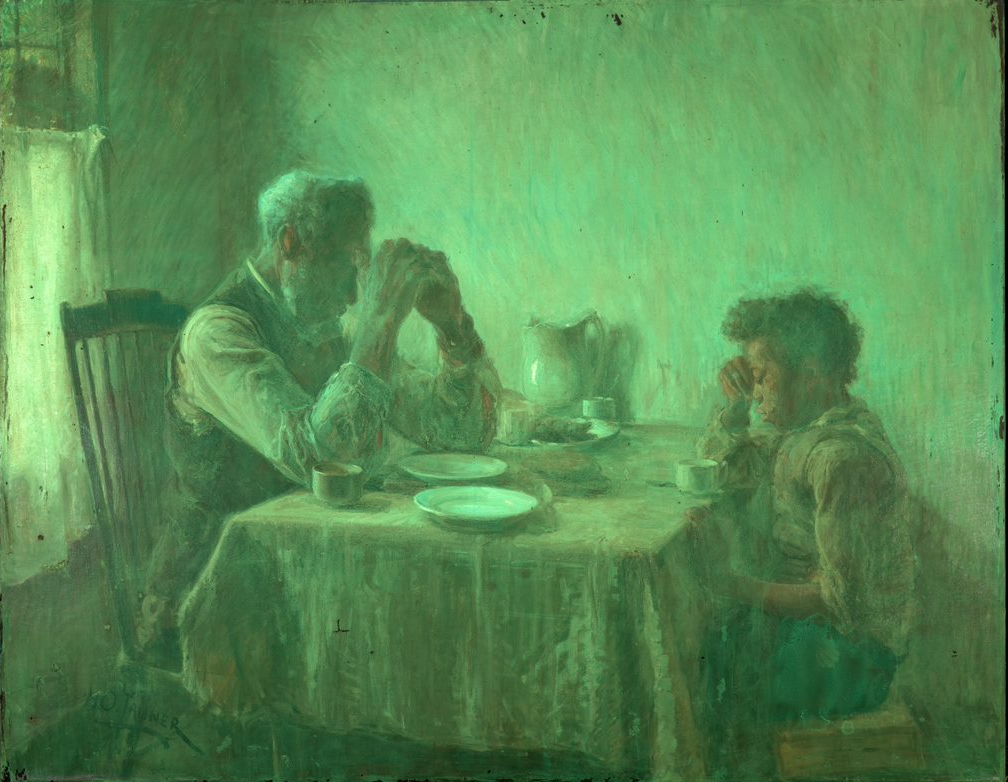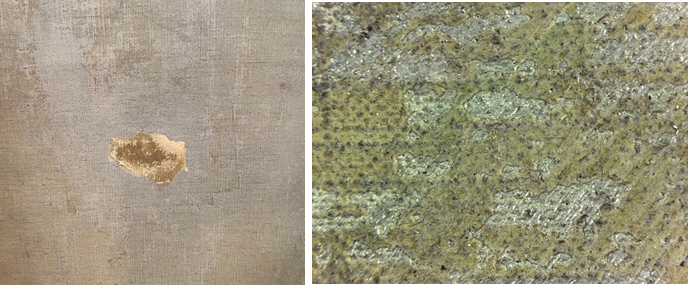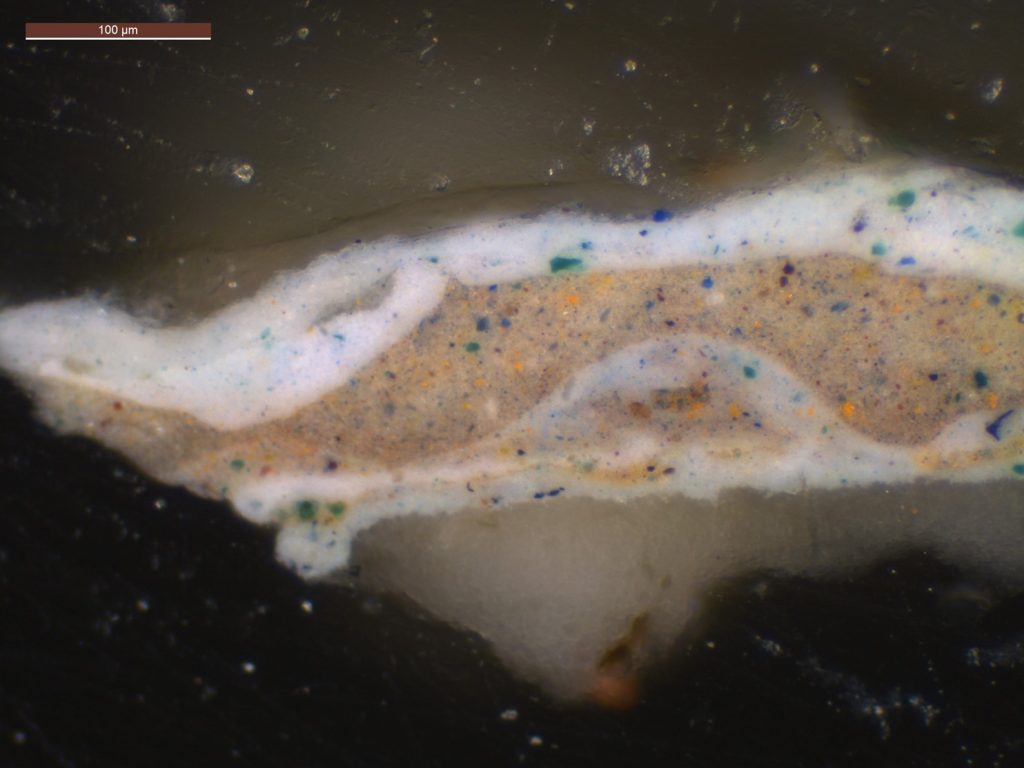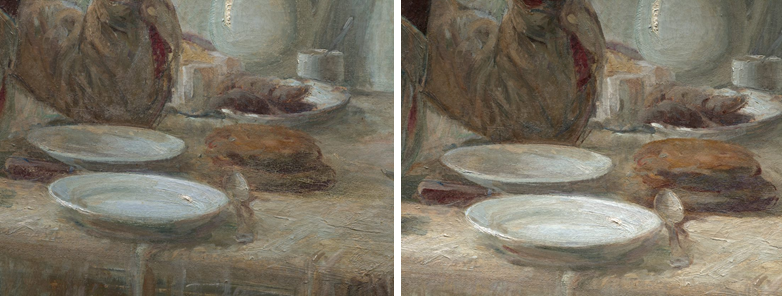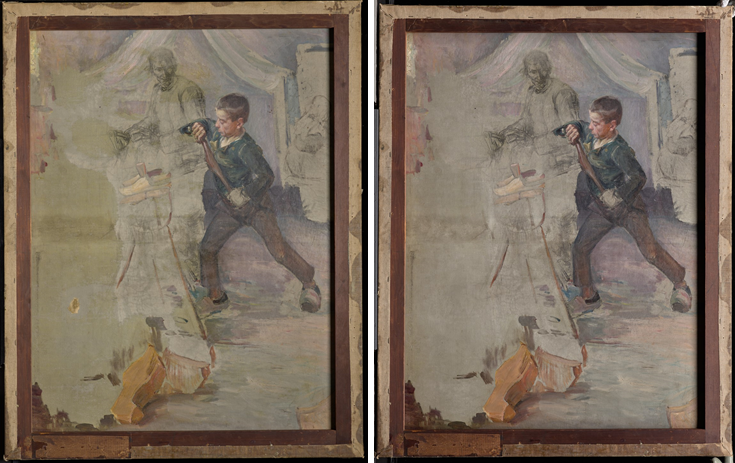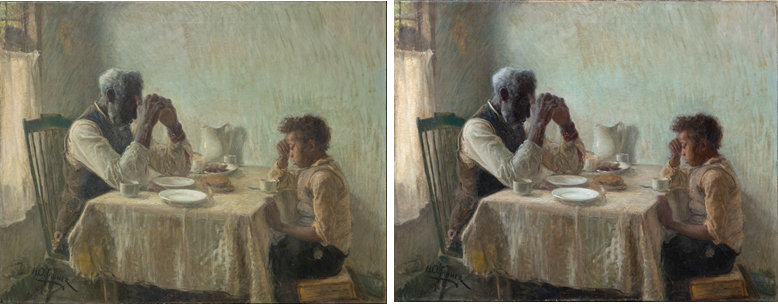Opening September 14, Slip Zone: A New Look at Postwar Abstraction in the Americas and East Asia highlights the innovations in painting, sculpture, and performance that shaped artistic production in the Americas and East Asia during the mid-20th century. Find out about the transnational connections between pairs of artworks featured in the show from the exhibition’s curators.
Dr. Anna Katherine Brodbeck, Hoffman Family Senior Curator of Contemporary Art
While the narrative of US art history has focused on the singular achievements of Abstract Expressionism, it did not emerge on the world scene ex nihilo. Rather, US artists drew from multiple precedents, including the Mexican mural movement, which has special resonance for us at the DMA given our longstanding strengths in art from the region. In Slip Zone, Jackson Pollock’s Figure Kneeling Before Arch with Skulls is paired with Crepúsculo by David Alfaro Siqueiros. Siqueiros taught Pollock to use industrial paints at the Experimental Workshop in New York in 1936, which would later inform his use of nontraditional art media in his classic era drip paintings. The expressionistic pathos of this earlier Pollock painting also mirrors the influence of José Clemente Orozco, whose murals he had seen at Dartmouth College the same year.
Images: Jackson Pollock, Figure Kneeling Before Arch with Skulls, about 1934–38, oil on canvas, Dallas Museum of Art, TWO x TWO for AIDS and Art Fund, 2017.7, © Pollock-Krasner Foundation / Artists Rights Society (ARS), New York; David Alfaro Siqueiros, Crepúsculo, 1965, pyroxylin and acrylic on panel, private collection, © 2021 Artists Rights Society (ARS), New York / SOMAAP, Mexico City
Dr. Vivian Li, The Lupe Murchison Curator of Contemporary Art
Using a hair dryer and polyvinyl acetate adhesive—commercially available since 1947 as Elmer’s Glue-All—Takesada Matsutani discovered that he could create corporeal, bulbous forms by blowing air into the material from behind until each “bubble” burst. Affixing them to the surface of his paintings, Matsutani constructed uncanny compositions. Similar to Matsutani and other members of the pioneering Gutai collective in Osaka, Robert Rauschenberg sought to blur the distinction between art and life through the use of everyday materials. For his Hoarfrost series, he transferred newspaper images to pieces of diaphanous fabric. After meeting the Gutai collective in 1964, Rauschenberg later collaborated with them, including onstage.
Images: Takesada Matsutani, Work-63-A.L. (The night), 1963, polyvinyl acetate adhesive, oil, and acrylic on canvas, The Rachofsky Collection and the Dallas Museum of Art through the TWO x TWO for AIDS and Art Fund, 2012.1.5. Courtesy the artist. © Takesada Matsutani; Robert Rauschenberg, Night Hutch (Hoarfrost), 1976, ink on unstretched fabric, Dallas Museum of Art, gift of the artist, 1977.21, © Robert Rauschenberg Foundation
Vivian Crockett, Former Nancy and Tim Hanley Assistant Curator of Contemporary Art
Around 1968 Lynda Benglis began pigmenting large vats of rubber latex with day-glo paint and pouring the dyed materials directly onto the floor. Created after Benglis visited a 1969 Helen Frankenthaler retrospective, this work is a nod to Frankenthaler’s method of pouring paint onto unprimed canvas. A founding member of the Gutai Art Association, Shozo Shimamoto was also deeply invested in experiments with materiality and technique. The artist often incorporated elements of performance in the creation of his paintings, such as throwing glass bottles of paint at the canvas. To produce Untitled – Whirlpool, Shimamoto poured layers of paint onto the canvas, removing the paintbrush as a mediating tool and leaving the final composition to chance and the physical, viscous qualities of the material itself.
Images: Lynda Benglis, Odalisque (Hey, Hey Frankenthaler), 1969, poured pigmented latex, Dallas Museum of Art, TWO x TWO for AIDS and Art Fund, 2003.2, © 2021 Lynda Benglis / Licensed by VAGA at Artists Rights Society (ARS), NY; Shozo Shimamoto, Untitled – Whirlpool, 1965, oil on canvas, The Rachofsky Collection and the Dallas Museum of Art through the TWO x TWO for AIDS and Art Fund, 2012.1.3, © Shozo Shimamoto Association. Naples
